(QNO) - Full text of Decision 72/QD-TTg dated January 17, 2024 of the Prime Minister approving the Planning of Quang Nam province for the period 2021 - 2030, with a vision to 2050.
DECISION
Approving the Planning of Quang Nam province for the period 2021 - 2030, with a vision to 2050
Article 1. Approving the Planning of Quang Nam province for the period 2021 - 2030, with a vision to 2050, with the following contents:
I. PLANNING SCOPE AND BOUNDARIES
The entire administrative boundaries of the mainland territory of Quang Nam province and the sea space are determined according to the Law on the Sea of Vietnam 2012, Decree No. 40/2016/ND-CP dated May 15, 2016 of the Government detailing the implementation of a number of articles of the Law on Marine and Island Resources and Environment. Quang Nam province has a natural area of 10,574.86 km2, with coordinates: from 14°57'10" to 16°03'50" North latitude, from 107°12'40" to 108°44'20" East longitude; to the North it borders Thua Thien Hue province and Da Nang city, to the South it borders Quang Ngai province and Kon Tum province, to the West it borders the Lao People's Democratic Republic, to the East it borders the East Sea.
II. PERSPECTIVES, GOALS AND DEVELOPMENT BREAKTHROUGHS
1. Development perspective
Quang Nam province's planning for the period 2021 - 2030, with a vision to 2050, is consistent with the Party and State's development policies and guidelines, the goals and strategic orientations for socio -economic development of the whole country, the national strategy on green and sustainable growth; consistent with the national master plan, national sectoral planning, planning of the North Central and Central Coast regions and related plans.
Proactively create and strongly innovate thinking, maximize the potential and advantages of the province; do not trade the environment for economic development; develop the economy with a green economic mindset, in harmony with nature, develop a circular economy, a low-carbon economy to minimize waste generation, towards the goal of net emissions of "0" by 2050; promote the application of science and technology, innovation, improve competitiveness, create momentum for rapid and sustainable development.
Promote economic restructuring associated with growth model innovation, improve productivity, quality and efficiency of the economy on the basis of improving the quality of human resources, deeply participating in the global production network and value chain. Combine internal and external resources, strive for a number of industries and fields to be among the leading groups in the country such as the automobile industry and supporting industries for the mechanical industry; agricultural and pharmaceutical product processing industry; mining and processing of minerals and construction materials; tourism services.
Closely combine economic development with cultural development, health care, education, training, social security and poverty reduction; promote progress, social equity and improve the quality of life. Pay attention to economic, cultural and social development in rural, mountainous and ethnic minority areas.
Economic development associated with landscape preservation and heritage conservation. Exploiting and using natural resources effectively and sustainably, protecting the environment, proactively preventing natural disasters and adapting to climate change.
Maximize the human factor, taking people as the center, the subject, the most important resource and the goal of development; arouse the aspiration to build a prosperous and happy homeland, strongly promote traditional cultural values, the will of self-reliance, self-reliance and perseverance of the people of Quang Nam. Take investment and development of education and training, science and technology as the foundation for sustainable and long-term development.
Building a strong political system; ensuring national defense and security; maintaining order, discipline, social safety, and national border sovereignty; expanding and improving the effectiveness of foreign affairs and international integration. Building a border of peace, friendship, cooperation, and development.
2. Development goals by 2030
a) General objectives
By 2030, Quang Nam strives to become a fairly developed province in the country; an important growth pole of the Central Highlands region; with a synchronous and modern infrastructure network; developing aviation, seaports, logistics services, tourism, automotive mechanical industry, mechanical engineering, and electricity at regional level; forming a national center for pharmaceutical industry, deep processing of agricultural and forestry products, and silica; having high-quality vocational training facilities; having a rich cultural identity; most of the medical and educational facilities meeting national standards; having a synchronous urban system, linked with the countryside.
b) Specific goals by 2030
- Regarding economy: The average GRDP growth rate in the period of 2021 - 2030 reaches over 8%/year. Economic structure: The agriculture, forestry and fishery sector accounts for about 9 - 9.5%; the industry - construction sector accounts for about 37.5 - 37.8%; the service sector accounts for about 36 - 37.0%; taxes minus product subsidies account for about 16.2 - 17.0%. The average GRDP per capita reaches over 7,500 USD. Labor productivity increases by an average of 6.5 - 7%/year. The digital economy contributes about 30% of GRDP. The ratio of investment capital to GRDP is over 30% annually on average.
Total social investment capital increased by an average of over 12% annually. Budget revenue increased by an average of over 10% annually. Total import-export turnover increased by an average of over 15% annually. Attracted over 15 million tourists, including about 8 million international visitors and 7 million domestic visitors. Belonged to the good group of the country in terms of provincial competitiveness index, administrative reform index, satisfaction index of people and organizations with services of state administrative agencies, public administration efficiency index, digital transformation index.
- Regarding culture and society: Average population growth rate is over 1.8%/year. The rate of trained workers reaches 75 - 80%, of which trained workers with degrees and certificates reach 35 - 40%. New jobs are created by 15,000 workers each year. The poverty rate is under 3%. Over 75% of kindergartens, over 90% of primary schools, over 85% of secondary schools and 60% of high schools meet national standards; 60% of general education institutions organize swimming lessons for students.
Achieve a ratio of 16 doctors/10,000 people, 48 hospital beds/10,000 people, 100% of communes meet national health standards. Maintain health insurance coverage rate at over 97%. Average life expectancy is over 75 years old. 100% of ranked relics are restored and embellished; 100% of intangible heritages in the list of national intangible heritages are preserved and promoted.
- Regarding environment and ecology: Forest coverage rate reaches 61%. The rate of urban population supplied with clean water through centralized water supply system reaches 100%; the rate of rural households using hygienic water reaches 100%, of which 60% of households use clean water from sources according to standards. 100% of industrial parks in operation have wastewater treatment systems that meet environmental standards, 100% of industrial clusters do not cause environmental pollution.
The rate of solid waste collected and treated in urban areas is 100%, and in rural residential areas is over 90%; the rate of regular industrial solid waste collected and treated is 100%; the rate of hazardous solid waste collected, transported and treated according to regulations is 90%. 100% of nature reserves, special-use forests and national parks are invested in forest protection, forest fire prevention, biodiversity restoration and sustainable exploitation; 100% of people in buffer zones have improved livelihoods associated with protected areas.
- Regarding infrastructure: Chu Lai Airport investment meets international airport standards with a scale of level 4F. Quang Nam seaport meets type I standards to receive ships up to 50,000 DWT. 100% of national highways, provincial roads and important traffic axes connecting functional areas and concentrated production areas are upgraded and expanded according to planning; over 60% of main roads in urban areas are fully invested. Inland waterway traffic is smooth and in accordance with traffic flow standards, especially inland waterways on the Truong Giang, Co Co, Thu Bon and Vinh Dien rivers.
Forming a number of smart transportation types. Modern digital infrastructure and synchronized, complete digital data, 4G/5G network covering 100% of localities in the province, creating a foundation for the development of digital government, digital economy, digital society. 100% of main roads in wards and towns are upgraded and expanded according to corresponding urban standards. Asphalt and concrete 100% of district and commune roads; harden and expand according to new rural standards 100% of village roads. Solidify 80% of all types of canals and small irrigation works, intra-field irrigation. 100% of households have access to the national grid and renewable energy sources.
- Regarding national defense, security, order and social safety: Building a society of order, discipline, security, safety and civilization. 100% of communes, wards and towns meet safety standards for security and order and have a comprehensively strong foundation. Building a strong national defense, building a position of people's hearts and the position of the province's defense area increasingly solid, in line with the development of the country's general defense situation. Carrying out well the work of managing and protecting national borders and landmarks; strengthening national defense diplomacy and people's diplomacy, building a peaceful, friendly, cooperative and developing border.
3. Vision to 2050
Quang Nam develops comprehensively, modernly and sustainably, imbued with the cultural characteristics of the Quang people; strives to become a centrally-governed city, making a major contribution to the central budget; is an important international tourism center on the basis of maximizing the value of world cultural heritages and world biosphere reserves. The economic structure is harmonious and reasonable with high autonomy and competitiveness. The infrastructure system is synchronous and modern. Harmonious socio-economic development between urban and rural areas, adapting to climate change, good environmental quality. The human development index and people's income are high, life is happy. National defense, security, sovereignty over borders on land, sea and islands are maintained and social order and safety are ensured.
4. Key tasks and development breakthroughs of the province
a) Complete infrastructure system
- Accelerate the development and completion of a modern and synchronous socio-economic infrastructure system, focusing on strategic transport infrastructure such as East-West inter-regional transport, airports, seaports, logistics infrastructure, infrastructure of economic zones, industrial parks, urban infrastructure, key infrastructure of rural areas, information technology infrastructure, telecommunications, culture, healthcare, education. Taking sustainable development of the marine economy as the focus, building Quang Nam into one of the national marine economic centers, the driving force for development of the North Central region and the Central Coast, the Central Highlands with a synchronous transport system; smooth regional and international connections; modern infrastructure of economic zones, industrial parks, urban areas, and coastal ecological tourism areas; significantly improved rural infrastructure, and sustainable development of agricultural infrastructure.
- Improve the quality of urbanization in both existing and new urban areas. Gradually reduce pressure on the ancient urban area of Hoi An on the basis of developing urban space in the East of Dien Ban town and Duy Xuyen and Thang Binh districts; strongly develop Tam Ky city on the basis of organizing a reasonable merger of space with Nui Thanh district, linking development with surrounding areas.
b) Improve competitiveness
- Promote the potential, dynamic role, competitive advantages of Chu Lai Open Economic Zone; the potential of Nam Giang International Border Gate Economic Zone; expand and form more industrial parks in favorable locations to promote the socio-economic development of the province and the region. Enhance the competitiveness of the mechanical, automation, processing, manufacturing, and construction materials industries. Reorganize and improve the efficiency of mineral exploitation, textile, footwear, and leather industries; develop new industries such as electronics, new materials production, silica, and pharmaceutical industries. Develop new types of tourism services such as: Event, conference, sports, rural, and mountainous tourism; strongly develop coastal and riverside tourist areas with diverse types of entertainment, recreation, treatment, and health care.
- Convert agricultural production to agricultural economy associated with restructuring the agricultural sector, in which encouraging collective economic forms to link with enterprises to organize production according to the value chain, ensuring stable raw material areas for deep processing; strongly developing the quantity and quality of OCOP products associated with start-up activities. Forming a number of industry clusters in the fields of industry, tourism, and agriculture with a number of large enterprises as cores, and enterprises in the province as satellites.
- Improve the quality and effectiveness of cooperation, attraction and management of foreign investment projects; prioritize projects with advanced technology, new technology, modern management, spillover effects, connecting production chains with enterprises in the province, capable of leading and forming ecosystems of key economic sectors.
c) Improve the quality of human resources and social welfare
- Standardize schools at all levels, ensure adequate teaching staff while improving the quality of teaching and the quality of cultural and physical education for students; fundamentally improve living and learning conditions for children of ethnic minorities and mountainous areas. Consolidate, expand and improve the quality of universities and colleges in the area. Improve the quality of the health system and the number of doctors at all levels; strengthen public-private partnership to meet the people's medical examination and treatment needs, encourage the development of high-quality private hospitals and clinics.
- Upgrade and effectively use cultural and sports spaces at grassroots and residential areas. Upgrade, expand and build new public facilities to serve the people. Form many thematic parks, green parks, squares and sports fields in urban areas.
d) Improving science and technology capacity
- Promote synchronous and comprehensive digital transformation, proactively participate in the fourth industrial revolution; develop high-quality human resources and skilled workers associated with increasing population size and quality and strongly shifting the labor structure to industry and services.
- Research and propose mechanisms and policies to attract and effectively use foreign and Vietnamese science and technology experts, especially Quang Nam people living abroad, to participate in innovation activities and develop the science and technology market in the province.
- Encourage enterprises to research and invest in science and technology; support enterprises to establish science and technology organizations, and improve enterprises' technology absorption capacity.
III. DEVELOPMENT ORIENTATIONS OF SECTORS AND FIELDS AND ORGANIZATION PLAN OF SOCIO-ECONOMIC ACTIVITIES
1. Development orientation of important industries
a) Industry
- Develop industry towards a circular economy, specialization, high automation; rapidly increase the contribution of processing and manufacturing industry and become the main pillar in the economy. Promote the development of automobile manufacturing and assembly industry, mechanical, electrical and electronic products; form a national multi-purpose mechanical and automobile center, develop supporting industries associated with logistics services, seaport, airport and railway logistics. Promote the development of the Central Gas Power Center project associated with industries using energy and post-gas products in Chu Lai Open Economic Zone, creating new development momentum for the province and the region.
- Prioritize the construction of industrial parks and high-tech industrial parks in the delta region to attract industries with high knowledge content, automation, high added value, and large budget contributions. Innovate technology, develop reasonably and sustainably the mining industry, construction materials production, silica processing, garment, fashion, beverage, consumer goods, preservation industry, agricultural product processing, and wood products. Invest in industrial clusters in rural and mountainous areas to develop industries associated with solving local labor and raw materials; limit the acceptance of manufacturing industries that use a lot of energy and have the risk of causing pollution.
b) Trade, services and tourism
- Develop modern comprehensive services, play a leading role; form a logistics center, multimodal transport; develop Chu Lai International Airport and Quang Nam Seaport system associated with duty-free zones, industrial parks; build a logistics center in Nam Giang International Border Gate Economic Zone to serve goods from Thailand, Laos to Vietnam and vice versa. Improve the quality of trade and services in rural and mountainous areas; promote domestic consumption and export of products with national brands produced in Quang Nam at the same time as promoting the consumption of high-quality Vietnamese goods.
Forming a network of civilized and safe markets and supermarkets in district and commune centers, while promoting e-commerce activities. Developing modern insurance and banking services. Providing communication, freight transport and express delivery services to meet development requirements; upgrading and innovating forms of public transport.
- Exploiting the natural and cultural space of Quang Nam to become an international-class tourism center on the basis of maximizing the value of the World Cultural Heritages of Hoi An, My Son, Cu Lao Cham Biosphere Reserve, marine resources, islands, rivers, lakes, mountains and forests, historical and cultural relics and characteristics of the people of Quang Nam; focusing on developing types of tourism such as sightseeing, resort, entertainment, sports, events, conferences, health care, etc.
c) Agriculture, forestry and fishery sector
- Develop organic and safe agriculture in the direction of strengthening chain linkages, applying advanced technology, adapting to climate change; converting crops in arid, saline areas, and inefficient rice growing areas to crops, livestock, and specialized areas for growing high-value vegetables and medicinal herbs; forming safe agricultural and food production areas to supply urban areas, industrial parks, and tourist areas.
Planning and investing in infrastructure to ensure stable high-quality rice growing areas. Developing agriculture associated with the production of OCOP products, making Quang Nam the leading locality in the region in terms of quantity, variety and quality of OCOP products associated with the youth start-up movement. Preserving and developing traditional craft villages associated with the development of agricultural products rich in regional identity.
Encourage the development of livestock farming in groups of households, farms, semi-industrial scale, safety. Promote garden economy, farm economy, convert to planting seasonal fruit trees with cooperatives combined with community tourism development.
- Sustainable forest development based on increasing the quality of forest environmental service provision, developing the forest carbon credit market, developing medicinal plants under the forest canopy with Ngoc Linh ginseng as the key product to produce products with high added value, forming a natural medicinal plant industry center.
Increase income for forest management and protection forces and improve livelihoods for ethnic minorities and mountainous areas associated with forest protection and forest quality improvement. Convert small timber production forests to large timber plantations with high-value trees, forming stable raw material forest planting areas between people and businesses.
- Complete fishing infrastructure, including fishing ports and anchorage areas, storm shelters; standardize offshore and inshore fishing fleets, convert coastal fishing to aquatic resources protection; organize appropriate marine aquaculture, encourage aquaculture in irrigation and hydroelectric reservoirs, creating stable livelihoods for mountainous people.
Strongly socialize fishing logistics services, creating positive changes in exploitation, preservation, and processing of seafood products for export. Develop Cu Lao Cham nature reserve to become a model reserve of the whole country.
2. Development orientation of other industries and fields
a) Culture and sports
- Building a culture rich in Quang Nam's identity. Preserving and promoting the value of world cultural heritages, world biosphere reserves and the system of historical - cultural relics, scenic spots to become tourism resources. Researching and building the Hung Kings Temple, the Park of famous people and patriots, while completing the complex of the Monument to Heroic Vietnamese Mothers and other important historical - cultural relics in the area.
Preserve indigenous cultural resources to build and develop diverse and unique cultural products; turn Quang Nam into a cultural and artistic center, a leading attractive destination for cultural heritage tourism in the region with Hoi An ancient town and My Son relic site as the core. Invest in squares, urban parks and small parks, flower gardens, cultural and sports venues in residential areas.
- Promote the socialization of physical education and sports, build a number of standard competition facilities, qualified to organize national and international competitions; pay attention to developing high-performance physical education and sports activities, focusing on the province's strengths, along with developing mass physical education and sports to improve people's health.
b) Education and training
Synchronously develop a network of educational and training facilities, including public and non-public, from preschool to university; build an open, modern, advanced education system with structures and methods suitable to local practical conditions, ensuring connectivity, serving people's lifelong learning. Focus on integrated education and training, forming high-quality educational and training facilities, approaching international standards, comprehensively developing learners' capacity, harmonizing the interests of the state - people - investors according to the motto that all students can go to school with increasingly better quality education.
Developing the network goes hand in hand with investing in facilities and teaching equipment in the direction of standardization and modernization, improving the quality of teachers and educational managers; improving people's knowledge, training human resources, and nurturing talents. Diversifying training types in large cities and places with conditions; implementing well the work of streaming, career guidance, skills education, vocational training, paying attention to education for children with disabilities, children living in remote areas, especially difficult areas, and areas affected by natural disasters.
c) Health and health care
Develop a modern, synchronous and balanced health system among localities in the province; between preventive medicine, rehabilitation and treatment medicine. Encourage the development of high-quality, cutting-edge and specialized health services at provincial hospitals, while strengthening and perfecting primary health care, ensuring epidemic prevention, primary health care and treatment of simple diseases.
Expanding links and public-private partnerships between district health centers and commune health stations to effectively exploit existing facilities and meet the local needs of the people. Developing a family doctor system. Forming a synchronous disease control center system, connecting with the national and international disease control network, ready to effectively respond to future epidemics.
Promote digitalization and application of new technology in examination and treatment activities. Increase attraction of social resources to invest in high-tech hospitals meeting international standards combined with resort tourism and treatment and health care.
d) Social security
Mobilize maximum resources to invest in infrastructure to ensure social security. Narrowing the development gap between rural and urban areas; implement gender equality; ensure progress and social justice; Complete insurance system. Pay attention to life for wounded soldiers, people with meritorious services, policy families, ethnic minorities in the mountains, borders, islands, low -income people, people with disabilities and weaknesses.
Strengthen health and mental care for retirement, the elderly, the elderly. Fully implementing children's rights, ensuring a safe and healthy environment for children to develop comprehensively. Consolidate the State's social protection facilities, create conditions for volunteer organizations to build high quality social protection facilities.
Encourage investment in nursing areas, life skills training centers for children, maternity care services. Improve the quality of life in all aspects of the people, ensuring harmony between material and spiritual life; strive to reduce poverty sustainably, not to be poverty, no temporary houses. Complete the arrangement of mountainous population and upgrade and build houses for people with meritorious services; Ensure accommodation conditions for workers and low -income people.
d) Science, technology and innovation
Improving scientific and technological capacity and innovation associated with training human resources capable of acquiring and mastering advanced technologies. Speed up the application of the achievements of science and technology and innovation, especially the achievements of the fourth industrial revolution, artificial intelligence, Internet connection, new materials technology, biotechnology into key areas: processing industry, health, education, culture, tourism, environmental protection, natural disaster prevention, administrative development
Building digital, digital economic, digital economic, smart cities to create the main motivation for growth, creating breakthroughs in productivity, quality, efficiency, competitiveness, innovation of growth model, ensuring sustainability. Establish information technology park, agricultural and high -tech industry.
e) Administrative reform and digital conversion
Developing the digital government in a synchronized manner, connecting throughout the provincial to the commune level, bringing activities of the state agency to the digital environment based on data and digital technology to improve operational efficiency. Develop digital platforms, information systems, shared applications, specialized databases, digital data.
Restructuring the provincial shared applications according to the provincial e -government architecture model, forming and developing centralized data warehouse, proceeding to form large data of the province, meeting the requirements of analysis, forecasting and supporting decision making; Strengthen connectivity and sharing of data between systems, national data connection, providing online public services, quickly solving administrative procedures for people and businesses; E -commerce accounts for a high proportion in the province's trade; Ensuring information security, timely handling of incidents of safety and network security.
3. Plan to organize space of socio -economic activities and plans to arrange district and commune administrative units
a) Plan to organize space of socio -economic activities
Investing and developing according to the space structure model "Two -region, two motivational clusters, three development corridors", promoting the potential and geographical advantages of economic - cultural - political geography to promote the province's socio -economic development.
- Two regions include East and Western regions, of which:
+ Eastern regions include districts, towns and coastal plains: is the dynamic area of the province with the main economic sectors of marine economy, industry, trade, services, tourism and agriculture; concentrated large cities, administrative and political centers of the province. Tam Ky is an urban center of administrative, economic, education and training; Hoi An is an ecological - cultural - tourism and international urban area with special products with cultural depth; Dien Ban is an industrial, scientific and innovative urban development.
+ Western region consists of mountainous districts: is the conservation of natural forest ecosystems; developing national material and pharmaceutical raw material areas; garden economy, farm, livestock; exploiting hydroelectricity and minerals; Protect the border area. Kham Duc - Phuoc Son and Thanh My - Nam Giang urban areas are transitions, connections and development exchanges between the delta area of Quang Nam and Da Nang city and the Central Highlands and other countries on the East -West international corridor. Focus on investing in national highways linking the East to the West to create the motivation to develop the West.
- Two motivational clusters include:
+ Dien Ban - Hoi An - Dai Loc cluster: is the northern growth of the province, connecting with the economic spaces of Da Nang city. Forming a river and coastal urban chain through roads and systems of Vu Gia, Thu Bon and Co Co rivers; Developing tourism corridors based on waterway traffic routes. Improve the quality of Dien Nam - Dien Ngoc Industrial Park and industrial clusters in Dien Ban. Adjust industrial clusters on National Highway 14B Dai Loc district in the direction of connecting and expanding into industrial parks with synchronous infrastructure and guaranteed environment; Developing Dien Ban and Hoi An urban space associated with the urbanization of Da Nang city, forming a resort - entertainment urban area and coastal entertainment and coastal river.
+ Cụm Tam Kỳ - Núi Thành - Phú Ninh: Kết nối các không gian kinh tế của 03 đơn vị hành chính này thành khu vực phát triển kinh tế công nghiệp, dịch vụ logistic cảng biển, hàng không, thương mại, du lịch biển, y tế, giáo dục - đào tạo, đô thị thông minh, trong đó sáp nhập huyện Núi Thành với thành phố Tam Kỳ để phát triển thành đô thị loại I. Chu Lai là khu kinh tế tổng hợp, đa ngành, với hạt nhân là ngành công nghiệp cơ khí ô tô, tiếp tục tái cấu trúc At the same time, with the production of new products in accordance with the trend of the fourth industrial revolution. Linking with Quang Ngai province has become a key economic growth of the province.
- Three development corridors include:
+ Coastal economic dynamic corridor from Da Nang - Quang Ngai highway to coastal: Focusing ecological industries, high -tech industry, green tourism and river and sea urban chains associated with seaports and Chu Lai airports.
+ The corridor along the Dong Truong Son and Ho Chi Minh roads belong to the western space of the province: focusing on hydropower industry, exploiting and processing minerals, agriculture and forestry, preserving and promoting the unique culture of ethnic minorities; is the gateway to trade with the Central Highlands provinces and Thua Thien Hue province.
+ The corridor along Highway 14B and National Highway 14E connects to Highway 14D to Nam Giang International Border Gate: is the exchange shaft with the Central Highlands Economic Region and South Laos - North Cambodia.
b) Plan for arrangement of administrative units (ĐVHC) at district and commune level
- By 2025: Perform arrangements for district and commune -level units with both standards of natural area and population size of less than 70%; The district -level ĐVHC also has the standard of natural area below 20% and the population size of less than 200%; Commune -level units and at the same time have the standard of natural area below 20% and the population size of less than 300% prescribed.
- By 2030: Performing the remaining district and commune -level units with both standards of both natural area and population size of less than 100% prescribed; The district -level ĐVHC also has the standard of natural area below 30% and the population size of less than 200%; Commune -level units and at the same time have the standard of natural area below 30% and the population size of less than 300% prescribed.
- Standards of natural area and population size of the ĐVHC shall comply with the Resolution of the National Assembly Standing Committee on the standards of the ĐVHC and classify the units. The preparation and implementation of the planning planning of the district and commune levels for the period of 2023 - 2030 in addition to the standard of natural area and the population size need to take into account the results of the previous period, the ĐVHC has been stable for a long time, with a separate location, with specific factors and rural units have been planned into Urban EPs.
- Plan of arrangement of district and commune levels at 2023 - 2025 and the period of 2026 - 2030 comply with the overall plan arranging the district and commune levels of Quang Nam province approved by competent authorities. The determination of scope and administrative boundaries, specific geographical names of district and commune -level units will be implemented according to the decision of the competent authorities.
IV. Planning plan for urban systems, territorial organizations in rural areas and the development plan of functional areas
1. Urban system planning plan
- Developing green and ecological urban areas, associated with the landscape and natural environment with synchronous, modern and intelligent urban technical infrastructure systems; planning and investment in building important public institutions such as squares, green parks, thematic parks; amusement parks, entertainment and sports for ages.
- Harmonious connection between urban development and promotion of regional development. Improve the quality of urbanization associated with increasing urban economic efficiency; synchronous upgrade of economic, technical, social infrastructure, socio -architectural works, houses, quality of life of the people; focus on environmentally friendly works and projects.
Urban development adapts to climate change, green growth, smart, rich in identity, becoming a new motivation and development space. Invest in urban expansion at district -level administrative centers, linked to an inter -regional transport network, focusing on the quality of urban services. Research and adjust the general planning of Chu Lai Open Economic Zone in accordance with the actual development needs, improve economic efficiency and urban landscape.
- By 2025, upgrading 02 Nam Phuoc and Ha Lam cities to grade IV urban areas, forming 04 new cities, Duy Nghia - Duy Hai, Binh Minh, Dai Hiep, Tam Dan; The urbanization rate is over 37%.
- By 2030, upgrading Hoi An to grade II urban areas, Dien Ban to grade III urban areas, Ai Nghia to grade IV urban areas, forming 02 new cities, Viet An and Forest Protection; The urbanization rate is over 40%.
(Details in Appendix I)
2. Plan for territorial organization of rural areas; develop concentrated agricultural production areas; Distribution of rural residential areas
a) Orientation to allocate rural population points
Develop rural and mountainous areas in harmony with the process of urbanization; Suitable for natural conditions, current status and characteristics of each territory. Organizing and distributing rural residential areas separately from national highways, provincial roads and district roads to ensure favorable traffic on main transport routes and safety for residential areas.
Investing, creating links on technical and transport infrastructure with urban areas to facilitate the development of service activities for urban areas. Focus on arranging and stabilizing the mountainous population and natural disasters on the basis of suitable for the terrain, avoiding large relocation, improving the premises of many landslides.
b) Rural territorial organization associated with the development of concentrated agricultural production areas
Arranging residential areas convenient for moving to concentrated agricultural production areas, clean agriculture, safety, urban and agricultural ecological agriculture associated with cultural tourism and community.
Investing in concentrated production infrastructure systems, high -tech agricultural development areas and advanced technology. Developing forestry economy and organizing industrial crops and medicinal materials with high economic value associated with preliminary processing and raw processing in mountainous districts and deep processing in industrial parks. Forming centralized breeding clusters, biosafety and ensuring the distance to the residential area in accordance with regulations.
c) Distribution of rural population systems
Arranging stable arrangement of rural population towards forming residential areas according to new rural criteria, in accordance with new rural planning and other relevant plans. Limiting spontaneous urbanization in rural areas. Improve the quality of criteria to build new rural and new rural areas, new rural areas of district and commune -level models associated with community tourism. Rural connection planning with urban areas, connecting between regions.
3. Development plan for functional areas
a) Economic zone development plan
Continuing to develop 02 key economic zones: Chu Lai Open Economic Zone and Nam Giang International Border Gate Economic Zone.
- Attracting resources of domestic and foreign enterprises to develop Chu Lai open economic zone in the direction of multi -sectoral and multi -sector economic zones, becoming one of the major nucleus and development centers of the region and the whole country with the main breakthrough is the mechanical industry assembling, manufacturing automobile, electricity and industrial products supporting the mechanical industry, automation, electronics and post -national products. Establish a national pharmaceutical processing center, Silica Industrial Center of the Central region.
Maximize the functions and capacity of the seaport and airport system. Development of non -tariff areas associated with seaports and airports are production, processing and manufacturing centers with high added value and specific commercial and service activities. Forming modern and ecological new cities; High -class resorts.
- Nam Giang International Border Gate Economic Zone is a logistics economic zone, an important gateway of the key economic region of the Central region connected to the South Laos and Northeast Thailand through the East -West International Corridor Road. Building a shallow port associated with the system of Quang Nam, Da Nang and Dung Quat seaports; Promote warehousing activities, classification, packaging, transit ... using local labor force is mainly.
(Details in Appendix II)
b) Industrial Zone Development Plan
Reviewing and adjusting the scale of industrial parks being implemented, eliminating the inappropriate planning section, focusing on synchronous infrastructure investment and attracting investment. Supplementing new industrial parks in Dien Ban, Dai Loc, Que Son, Thang Binh, Hiep Duc, Phu Ninh and Tien Phuoc, associated with the corridor of national highways and highways in the province and the provincial roads conveniently. Industrial parks east of Da Nang - Quang Ngai highway developed under the model of eco -industrial parks, focusing on attracting industries to limit emissions into the environment, high added value, land use and economical energy.
(Details in Appendix III)
c) Industrial cluster development plan
Arranging and distributing reasonable industrial clusters associated with policies and solutions for management, investment in synchronous construction of technical infrastructure, environmental protection, land use efficiency, investment attraction, job creation. Arranging industrial clusters close to raw materials, ensuring the distance suitable for urban areas and residential areas.
Supplementing industrial clusters associated with processing agricultural and forestry products, pharmaceuticals, minerals and construction materials in the mountainous districts or mountainous communes in the delta area. Strict management of environmental treatment at industrial clusters. Convert the state form to invest in managing industrial clusters into the form of state support for site clearance and investment in infrastructure outside the industrial cluster fence; Infrastructure inside the industrial cluster invested, managed and exploited by enterprises.
(Details in Appendix IV)
d) Tourist development plan
Orientation for developing tourism space based on the value and distribution of tourism resources, infrastructure and the needs of tourists on 04 main spaces:
- Tourism development space of cultural and historical heritage, including My Son World Cultural Heritage Area, Hoi An World Cultural Heritage Area associated with Cu Lao Cham biosphere reserve. Exploiting the strength of cultural tourism to visit monuments, cultural research in combination with experienced tourism. Preserve and promote the world cultural heritage.
- Establish Duy Xuyen - Thang Binh coastal tourism development space connecting Hoi An tourism space on the basis of promoting the natural values of river - sea. Building seminars, conferences, commercial centers, amusement parks and resorts, high -class golf courses, Olympic standard sports works.
- Ecological tourism development space combines the cultural identity of ethnic groups in the western mountainous districts of the province. Focus on preserving natural landscapes, biodiversity, developing local community tourism and cuisine.
- Rural tourism development space in conditional areas. Focus on building new model rural residential areas associated with regional culture; Maintain craft villages and produce organic agricultural products, OCOP, aiming to become tourism products.
4. Regional development plan plays a motivational role
- Focus resources to invest in the key infrastructure network in the East. Promote reform of administrative procedures, remove difficulties in site clearance, create conditions for attracting social resources to invest in developing key infrastructure such as airports, ports, industrial parks, non -tariff areas, urban areas, tourist areas - entertainment - sports - events, waste treatment areas, wastewater, electricity and water supply, water and telecommunications. Increasing attracting enterprises into investment in developing production and business, exploiting tourism, trade, services, creating jobs and contributing to the provincial budget.
- Accelerate economic restructuring, labor structure to form spacious and modern cities. Focus on manufacturing and trading industries associated with raw materials in rural and mountainous areas. Rearranging protection forests and production forests is a coastal planting forest in accordance with the planning of Eastern regional development, creating conditions for economic development associated with natural disaster prevention and climate change. Strengthen training of high quality human resources to meet production and service development requirements.
5. Development plan for difficulties, especially difficult
- Developing forestry and pharmaceutical economy associated with farming, protecting forests, improving the quality of forest, rehabilitation of biodiversity and forest ecosystems. Building a professional forest protection force combined with the participation of the community in forest protection. Forest environmental service for leasing medicinal herbs and eco -tourism exploitation, associated with community tourism in villages. Develop breeding products, organic cultivation and OCOP products.
- Promote the development of industrial and handicraft production from local raw materials; giving priority to programs and projects to support industry development for agriculture, rural areas, agricultural and forestry and mineral processing industry; Carry out aquaculture in the lake of hydroelectricity to create more income for people.
- Support for vocational training and transformation for workers who lack production land. Preserve and promote the traditional cultural identity of ethnic minorities associated with sustainable tourism development; Solving urgent issues such as gender equality, illiteracy elimination, child malnutrition.
- Consolidating the grassroots health system and medical investment in mountainous districts, ensuring most common medical examination and treatment in mountainous areas. Investing in solid school system combined with natural disasters; pay attention to semi -boarding and boarding facilities. Accelerate the completion of population arrangements associated with the formation of residential areas and residential areas with stable lives. Investing in transportation systems connecting production areas with provincial roads and national highways to facilitate the transport of mountainous goods to the plains.
6. Defense, security, foreign affairs
Building and consolidating a solid defense area on national defense and security. Associating defense cooperation with other fields, especially between defense and defense against security and economy, overcoming the consequences of war. Maintain sovereignty of border security on land, sea and islands. Combining combination of national defense and security with economy, culture, society and foreign affairs. Building peace, friendship, stability, cooperation and development. Expand cooperation, improve international integration efficiency.
V. TECHNICAL INFRASTRUCTURE DEVELOPMENT PLAN
1. Plan for developing the transportation network
- synchronously develop the system of strategic transport infrastructure of the province with 05 types of transportation including roads, railways, inland waterways, sea roads, airways in the direction of modernity, in accordance with the orientation of national planning; Ensuring the connectivity of the region and inter -regional along the coastal economic corridors, the East -West economic corridor, synchronously connected to the whole country and international interdependence. Take the transport hub for airports, Quang Nam seaport, Nam Giang international border gate as a key; upgrade and expand according to the planning of the National - Western -west connection axes such as 14D, 14B, 14g, 14h, 40B, 24C and complete the axes connecting North - South, connecting axes to serve functional areas in Chu Lai Open Economic Zone; Establishing an important transportation network linking the region from the plain to the mountainous region, smoothly connecting Chu Lai open economic zone and Nam Giang International Border Gate Economic Zone and the Central Highlands region, countries under the East -West international corridor.
- Upgrading and expanding the provincial road system to link economic corridors, economic zones and urban areas; Developing inter -district -connected district roads to upgrade to provincial roads. Building bridges across Truong Giang and Co Co rivers with modern technology, unique architecture suitable for coastal urban landscape and promoting tourism development.
Develop inter -regional intelligent transportation systems; Building convenient wharves and parking areas in urban areas, smart parking lots in key areas. Basic expansion and hardening of rural roads connected to the commune axis.
- Investing in building Chu Lai International Airport with a 4F airport scale, is an international aviation industry - service center with passenger transport activities, goods and aviation logistics; Flight training and training center; Repair and maintenance center of aircraft, producing aviation accessories; associated with non -tariff zones and high -tech industrial parks, forming production, manufacturing and processing centers of high -tech products, high value, import and export of air roads.
- Investing in a new thread line connecting to Tam Hiep, Tam Hoa, Tam Giang, ... to ensure the receipt of vessels with a load of up to 50,000 DWT associated with non -tariff area, industrial park, airport, railway station; forming multimedia logistics center. Building Quang Nam seaport to become the center of seaport - logistics container service of the Central - Central Highlands, which is an important focal point of the East -West international corridor.
- Gradually invest in dredging the channels of Co Co, Truong Giang and Thu Bon rivers, exploiting inland waterway transport in the North - South, East - West direction connected to islands in Quang Nam, Quang Ngai and tourist areas and urban areas of Da Nang - Hoi An - Duy Hai, Duy Nghia - Binh Minh - Tam Ky - Nui Thanh; synchronously developing the port system, inland wharf, the wharf gathering construction materials according to the planning, ensuring the connection of inland waterway transport systems with other types of transportation.
- Developing the railway station system associated with railways through the province according to the national railway plan, the existing North -South railway, the North -South high -speed railway and Da Nang - Central Highlands railway. Research on investment 02 urban railway lines connected to the urban railway network of Da Nang city, including the connection line from Chu Lai International Airport and the connection line from Hoi An city.
(Details in Appendix V)
2. Energy development plan and power supply network
a) Energy development plan
Follow the master plan on national energy in the period of 2021 - 2030, with a vision to 2050.
b) Power supply network development plan
- Continue to implement projects that have been planned in the previous period and promote the development of energy projects according to local potential; khai thác tối đa tiềm năng các nguồn thủy điện, tận dụng nguồn thủy năng trên các hồ thủy lợi, hồ chứa nước để khai thác thủy điện; đẩy mạnh phát triển các nguồn năng lượng tái tạo (điện gió trên bờ và ngoài khơi, điện mặt trời, điện sinh khối, điện rác, ...), năng lượng mới, năng lượng sạch (hydro, amoniac xanh,...), đặc biệt là các nguồn điện tự sản, tự tiêu, điện mặt trời mái nhà phù hợp điều kiện thực tế, nhu cầu của tỉnh và phù hợp với Quy hoạch và Kế hoạch thực hiện Quy hoạch phát triển điện lực quốc gia thời kỳ 2021 - 2030, tầm nhìn đến năm 2050; đảm bảo môi trường, bảo vệ rừng và an ninh nguồn nước.
- Tiếp tục xây dựng mới, nâng cấp, cải tạo các trạm biến áp và đường dây 500kV, 220kV, 110kV, các trạm và đường dây trung, hạ thế đảm bảo đáp ứng đủ nhu cầu phụ tải, đặc biệt là các phụ tải các khu công nghiệp, cụm công nghiệp, khu đô thị, khu du lịch. Từng bước ngầm hóa mạng lưới điện trung và hạ thế; đảm bảo đạt và duy trì tiêu chí điện theo bộ tiêu chí quốc gia về xây dựng nông thôn mới; đảm bảo cấp điện an toàn, ổn định cho các vùng sâu, vùng xa.
(Chi tiết tại Phụ lục VI, VII, VIII)
3. Phương án phát triển mạng lưới thông tin truyền thông
- Đẩy mạnh phát triển hạ tầng viễn thông phục vụ kết nối số cho người dân. Tập trung phát triển hạ tầng di động băng rộng 4G/5G, phủ sóng mạng di động và mạng cáp quang băng rộng đến tất cả các thôn, bản, khu vực dân cư tập trung, làm cơ sở quan trọng cho sự phát triển chính phủ số, kinh tế số, xã hội số của Quảng Nam; tăng nhanh tỷ lệ người dùng Internet, đặc biệt ở khu vực nông thôn; nâng cao dung lượng kết nối và chất lượng dịch vụ mạng; thực hiện phủ sóng các vùng trắng, vùng lõm về kết nối mạng băng thông rộng. Kết hợp tăng cường dùng chung cơ sở hạ tầng viễn thông đối với các ngành, lĩnh vực.
Đầu tư, nâng cấp các công trình hạ tầng ngầm, ngầm hóa hạ tầng ngoại vi tại các khu vực yêu cầu cao về mỹ quan; khu vực các tuyến, đường, phố chính tại thành phố Tam Kỳ, thành phố Hội An, thị xã Điện Bàn và trung tâm các huyện; khu du lịch, di tích; các khu công nghiệp, cụm công nghiệp, khu đô thị, khu dân cư mới.
- Chuyển đổi toàn bộ mạng Internet của tỉnh sang ứng dụng địa chỉ giao thức Internet thế hệ mới; mở rộng mạng truyền số liệu chuyên dùng đến cấp xã. Phát triển hạ tầng công nghệ thông tin, hạ tầng số, mạng kết nối vạn vật (IoT) liên thông, đồng bộ, hiện đại nhằm phục vụ chuyển đổi số toàn diện, phát triển kinh tế số, xã hội số, chính quyền số; xây dựng lộ trình và triển khai tích hợp cảm biến và ứng dụng công nghệ số vào các hạ tầng thiết yếu như giao thông, năng lượng, điện, nước, đô thị, thanh toán không dùng tiền mặt, để chuyển đổi thành một bộ phận cấu thành quan trọng của hạ tầng số.
Tích hợp, bổ sung hạng mục hạ tầng viễn thông, ứng dụng, kết nối mạng IoT, cảm biến và ứng dụng công nghệ số vào các dự án đầu tư xây dựng hạ tầng thiết yếu, hạ tầng giao thông, đô thị.
- Phát triển ngành công nghiệp công nghệ số có chọn lọc, phù hợp với định hướng phát triển của tỉnh; phát triển các doanh nghiệp công nghệ thông tin, công nghệ số có khả năng dẫn dắt làm chủ công nghệ, cung cấp sản phẩm số, giải pháp phần mềm phục vụ kinh tế số, chính quyền số, đô thị thông minh được đưa vào ứng dụng thực tế trên địa bàn tỉnh và các địa phương khác trên cả nước.
- Phát triển bưu chính trở thành hạ tầng quan trọng của nền kinh tế số, thương mại điện tử và logistics. Phát triển ngành báo chí, truyền thông theo hướng chuyên nghiệp, hiện đại; chuyển đổi số các cơ quan báo chí nòng cốt. Xây dựng Trung tâm giám sát, điều hành an toàn thông tin (SOC) kết nối với hệ thống hỗ trợ giám sát, điều hành an toàn thông tin, phát triển bền vững trên cơ sở ứng dụng mạnh mẽ khoa học, công nghệ để phục vụ chính quyền số.
4. Phương án phát triển mạng lưới thủy lợi, cấp thoát nước
- Phát triển hệ thống thủy lợi có trọng tâm, trọng điểm, áp dụng công nghệ hiện đại, từng bước đồng bộ, phục vụ cấp nước đa ngành, đa mục tiêu. Phát triển thành 06 vùng cấp nước thủy lợi gồm: thượng nguồn Vu Gia, Thu Bồn, lưu vực sông Ly Ly, hạ lưu Vu Gia - Thu Bồn, Bắc hồ Phú Ninh, Nam hồ Phú Ninh. Kết nối liên thông, điều hòa cung ứng bảo đảm an ninh nguồn nước cho nông nghiệp, sinh hoạt, công nghiệp, du lịch, đô thị, dịch vụ và các ngành kinh tế khác; gắn với các vùng tiêu thoát nước: Điện Nam, Đại Thắng, Xuân Phú, Duy Xuyên, Bàu Bàng - Tam Đàn, Tam Xuân.
Nạo vét các sông Cổ Cò, Tam Kỳ, Bàn Thạch, Trường Giang để tăng cường khả năng tích trữ và kịp thời thoát nước, chống ngập úng, hướng đến phòng chống thiên tai, bảo vệ môi trường, thích ứng với biến đổi khí hậu và nước biển dâng.
- Khai thác hợp lý các công trình cấp nước cho sinh hoạt và công nghiệp hiện có, từng bước đầu tư nâng cấp, mở rộng và đầu tư xây dựng mới theo phân vùng cấp nước, đảm bảo nhu cầu sử dụng nước toàn tỉnh. Ưu tiên xây dựng hệ thống cấp nước tập trung tại khu vực vùng Đông; xây dựng mạng lưới cấp nước tập trung tại các khu vực trung tâm huyện, xã, kết nối phục vụ liên xã, đáp ứng nhu cầu sử dụng. Nguồn nước chủ yếu từ hồ Phú Ninh, hệ thống sông Thu Bồn - Vu Gia.
(Chi tiết tại Phụ lục IX, X)
5. Phương án phát triển các khu xử lý chất thải
- Tiếp tục nâng cấp, mở rộng, nâng cao hiệu quả thu gom, xử lý chất thải. Xây dựng 03 khu xử lý chất thải rắn sinh hoạt tại các khu vực Bắc Quảng Nam, Nam Quảng Nam và thành phố Hội An. Tại mỗi huyện, thị xã, thành phố, lựa chọn vị trí phù hợp hình thành ít nhất 01 khu xử lý chất thải đảm bảo dự phòng khi có sự cố tại khu vực đồng bằng. Ưu tiên áp dụng các công nghệ tái chế, xử lý chất thải tiên tiến, hiện đại, thân thiện môi trường, kết hợp thu hồi năng lượng hoặc công nghệ tái sản xuất phân bón hữu cơ, hạn chế tối đa lượng chất thải chôn lấp trực tiếp.
- Chất thải rắn sinh hoạt thông thường thu gom về các khu xử lý tập trung cấp vùng hoặc địa phương; chất thải rắn tại khu công nghiệp, cụm công nghiệp, chất thải y tế thu gom về khu xử lý chất thải rắn cấp vùng; riêng chất thải rắn nguy hại phải được thu gom, xử lý tại các khu vực xử lý chuyên dụng. Đối với nước thải tại khu công nghiệp, cụm công nghiệp, đô thị, nước thải y tế phải được thu gom xử lý, đảm bảo tiêu chuẩn trước khi thải ra môi trường.
(Chi tiết tại Phụ lục XI)
VI. SOCIAL INFRASTRUCTURE DEVELOPMENT PLAN
1. Phương án phát triển mạng lưới cơ sở văn hóa - thể thao
Nâng cao chất lượng hoạt động hệ thống thiết chế văn hóa từ tỉnh đến cơ sở, tạo lập không gian sinh hoạt văn hóa cho mọi lứa tuổi. Đẩy mạnh công tác xã hội hoá hoạt động thể dục thể thao, trở thành phong trào sâu rộng với nhiều chủ thể, nhiều nguồn lực. Phát huy tối đa hiệu quả của các thiết chế văn hóa, thể thao, nhất là nhà văn hóa, nhà thi đấu, sân vận động.
Hình thành Khu liên hợp thể thao đáp ứng yêu cầu tổ chức một số giải thi đấu thể thao cấp vùng, quốc gia. Phát triển khoảng 10 sân gôn đạt tiêu chuẩn phục vụ thể thao, du lịch trong nước và quốc tế tại Tam Kỳ, Điện Bàn, Núi Thành, Thăng Bình, Duy Xuyên, Đại Lộc, Nông Sơn. Phát triển sâu rộng, bền vững hoạt động thể dục thể thao, phát triển thể thao thành tích cao, tập trung vào các bộ môn trong hệ thống Asiad và Olympic và những bộ môn thế mạnh của tỉnh.
(Chi tiết tại Phụ lục XII)
2. Phương án phát triển mạng lưới cơ sở giáo dục, giáo dục nghề nghiệp
- Đầu tư hệ thống trường lớp chuẩn thuộc các bậc học; nâng cấp, hoàn thiện các trường phổ thông bán trú, nội trú miền núi. Xây dựng một số trường tiên tiến, ứng dụng công nghệ giảng dạy, học tập hiện đại tại các trung tâm đô thị lớn. Phát triển các trường tư thục chất lượng cao, dạy ngoại ngữ.
- Tập trung đầu tư phát triển hệ thống cơ sở giáo dục, giáo dục nghề nghiệp chất lượng cao, tiệm cận chất lượng đào tạo, trình độ các nước Asean - 4, có kỹ năng nghề phù hợp tiêu chuẩn khu vực và quốc tế, phục vụ phát triển các ngành nghề trọng điểm của tỉnh và vùng động lực miền Trung. Thu hút nhân tài phục vụ công tác hoạch định chiến lược và trực tiếp làm việc trong các ngành nghề, lĩnh vực mũi nhọn của tỉnh.
- Xây mới các khu giáo dục đào tạo để hình thành trung tâm giáo dục phía Bắc gắn với Đại học Đà Nẵng; phía Nam theo mô hình đô thị đại học để trở thành một trong những trung tâm đào tạo nhân lực chất lượng cao hàng đầu, tiêu chuẩn quốc tế đối với một số lĩnh vực của vùng.
(Details in Appendix XIII)
3. Phương án phát triển mạng lưới hạ tầng y tế
- Phát triển hợp lý hệ thống y tế thông minh; đầu tư hạ tầng kỹ thuật và ứng dụng công nghệ thông tin đáp ứng phát triển y tế số, khám chữa bệnh từ xa. Đẩy mạnh xã hội hóa thu hút các nguồn lực xây dựng, phát triển các cơ sở y tế chất lượng cao; thu hút các bệnh viện tư nhân chất lượng cao, hướng tới tiêu chuẩn cấp vùng, khu vực và quốc tế.
- Tiếp tục đầu tư xây mới, nâng cấp, phát triển hạ tầng cơ sở y tế, mở rộng quy mô giường bệnh; phát triển kỹ thuật mũi nhọn y tế chuyên sâu. Tập trung hoàn thiện đồng bộ hạ tầng các bệnh viện đa khoa, chuyên khoa tuyến tỉnh. Ưu tiên đầu tư nâng cấp hệ thống trung tâm y tế tuyến huyện. Cải tạo, nâng cấp, hệ thống trạm y tế đạt tiêu chí y tế trong bộ tiêu chí quốc gia về xã nông thôn mới. Phát triển mạnh y tế chăm sóc sức khỏe gắn với du lịch nghỉ dưỡng.
(Chi tiết tại Phụ lục XIV)
4. Phương án phát triển hạ tầng an sinh xã hội
- Phát triển mạng lưới cơ sở trợ giúp xã hội theo hướng xã hội hoá. Thu hút đầu tư các viện dưỡng lão chất lượng cao; xây dựng, phát triển các cơ sở chăm sóc, nuôi dưỡng đối với trẻ em có hoàn cảnh đặc biệt, người già neo đơn, không nơi nương tựa; quan tâm đảm bảo cuộc sống cho người có công, gia đình chính sách.
- Mở rộng, nâng cao năng lực hoạt động của các cơ sở trợ giúp xã hội, cơ sở nuôi dưỡng, điều dưỡng người có công, trung tâm điều dưỡng người tâm thần, cơ sở cai nghiện ma tuý, đảm bảo quy mô, năng lực tiếp nhận phù hợp nhu cầu thực tiễn. Đầu tư nâng cấp các trung tâm dịch vụ việc làm nhằm đáp ứng yêu cầu phát triển của thị trường lao động, kết nối thông suốt với hệ thống trung tâm dịch vụ việc làm trong tỉnh, khu vực và cả nước, sử dụng có hiệu quả nguồn nhân lực.
(Chi tiết tại Phụ lục XV)
5. Phương án phát triển khoa học, công nghệ và đổi mới sáng tạo
- Tăng cường xây dựng cơ sở hạ tầng, trang thiết bị kỹ thuật hiện đại cho các tổ chức khoa học công nghệ và đổi mới sáng tạo công lập, nâng cao năng lực hoạt động nghiên cứu, làm chủ công nghệ để chuyển giao ứng dụng các thành tựu khoa học và công nghệ vào thực tiễn sản xuất và đời sống. Hình thành Trung tâm khoa học công nghệ và đổi mới sáng tạo xếp hạng quốc gia và khu vực trong lĩnh vực công nghiệp công nghệ cao, cơ khí chính xác, tự động hóa. Đầu tư đơn vị phân tích, kiểm định tập trung, chuyên sâu của tỉnh với các trang thiết bị hiện đại, đủ năng lực phân tích, kiểm định chất lượng phục vụ chung cho công tác quản lý về tiêu chuẩn, chất lượng, an toàn vệ sinh thực phẩm của các ngành khoa học công nghệ, tài nguyên môi trường, y tế, nông nghiệp.
- Xây dựng trung tâm công nghệ sinh học để tổ chức nghiên cứu và phát triển công nghệ sinh học, dược liệu; hình thành khu nông nghiệp ứng dụng công nghệ cao phục vụ bảo tồn các giống cây trồng quý hiếm, sản xuất nông nghiệp an toàn, phục vụ tiêu dùng và xuất khẩu.
- Phát triển, nâng cao năng lực hệ thống các tổ chức dịch vụ tư vấn, tìm kiếm, môi giới, hỗ trợ chuyển giao công nghệ, hỗ trợ phát triển thị trường khoa học và công nghệ. Tập trung đầu tư, xây dựng và phát triển Trung tâm thông tin và thống kê khoa học và công nghệ của tỉnh. Khuyến khích xã hội hóa hoạt động dịch vụ thông tin, thống kê khoa học công nghệ và đổi mới sáng tạo. Nghiên cứu xây dựng Trung tâm khởi nghiệp đổi mới sáng tạo của tỉnh.
(Chi tiết tại Phụ lục XVI)
6. Phương án phát triển hạ tầng phòng cháy chữa cháy và cứu hộ, cứu nạn
- Phát triển hạ tầng phòng cháy chữa cháy, đáp ứng yêu cầu về lực lượng, cơ sở vật chất, phương tiện, doanh trại; khuyến khích các cơ sở sản xuất quy mô lớn tự xây dựng đội và trụ sở doanh trại cho lực lượng phòng cháy chữa cháy và cứu nạn cứu hộ của riêng mình. Phân bố không gian hạ tầng phòng cháy chữa cháy theo vùng, định hướng mỗi đơn vị cấp huyện có tối thiểu 01 đội phòng cháy chữa cháy và cứu nạn cứu hộ, ưu tiên các huyện khu vực đồng bằng; bố trí xây dựng tại các địa điểm thuận lợi về giao thông, nguồn nước, thông tin liên lạc.
- Đầu tư cơ sở vật chất, nguồn nhân lực để đáp ứng nhu cầu phát triển hạ tầng phòng cháy chữa cháy và cứu nạn cứu hộ.
Chú trọng bảo vệ các khu dân cư, các cơ quan, cơ sở sản xuất kinh doanh, các công trình văn hóa, các khu rừng. Phát huy sức mạnh của toàn xã hội, sự tham gia của các cơ quan, tổ chức, cộng đồng, cá nhân; bảo đảm hài hòa lợi ích; đẩy mạnh xã hội hóa; ứng dụng tiến bộ khoa học và công nghệ hiện đại, tiến tới đạt tiêu chuẩn về phòng cháy chữa cháy và cứu nạn cứu hộ của các nước tiên tiến trong khu vực và trên thế giới.
7. Phương án phát triển hạ tầng thương mại, dịch vụ
- Xây dựng và hình thành các trung tâm logistics tại Khu Kinh tế mở Chu Lai gắn với Cảng biển Quảng Nam, Cảng hàng không quốc tế Chu Lai; trung tâm logistics tại Khu kinh tế cửa khẩu quốc tế Nam Giang.
- Xây dựng Trung tâm hội chợ triển lãm tại thành phố Tam Kỳ, thành phố Hội An và huyện Núi Thành. Xây dựng các trung tâm thương mại, siêu thị tập trung chủ yếu tại Tam Kỳ, Hội An, Điện Bàn và mỗi trung tâm huyện đầu tư ít nhất 01 siêu thị hoặc trung tâm thương mại với quy mô phù hợp.
- Xúc tiến đầu tư xây dựng chợ đầu mối nông súc sản miền Trung - Tây Nguyên tại huyện Thăng Bình với quy mô cấp vùng; xây dựng ít nhất 07 chợ đầu mối và các chợ biên giới tại cửa khẩu Nam Giang, cửa khẩu Tây Giang. Tiếp tục nâng cấp, cải tạo, xây dựng chợ truyền thống, chợ đô thị, từng bước nâng cao chất lượng dịch vụ các chợ; đầu tư xây dựng hình thành các tuyến phố đêm, khu chợ đêm gắn với các điểm du lịch và dịch vụ vui chơi giải trí.
- Xây dựng hệ thống hạ tầng cung ứng, dự trữ xăng dầu, khí đốt đảm bảo đầy đủ, an toàn, liên tục cho phát triển kinh tế - xã hội, an ninh quốc phòng của tỉnh và khu vực.
(Chi tiết tại Phụ lục XVII)
VII. PHƯƠNG ÁN PHÂN BỔ, KHOANH VÙNG ĐẤT ĐAI
Nguồn lực tài nguyên đất đai phải được điều tra, đánh giá, thống kê, kiểm kê, lượng hóa, hạch toán đầy đủ trong nền kinh tế, được quy hoạch sử dụng hiệu quả, hợp lý, tiết kiệm, bền vững với tầm nhìn dài hạn; đáp ứng yêu cầu phát triển kinh tế - xã hội; bảo đảm quốc phòng, an ninh; bảo vệ môi trường, thích ứng với biến đổi khí hậu.
Đảm bảo việc bố trí sử dụng đất hợp lý trên cơ sở cân đối nhu cầu sử dụng đất của các ngành, lĩnh vực phù hợp với chỉ tiêu Quy hoạch sử dụng đất quốc gia thời kỳ 2021 - 2030 được cấp có thẩm quyền phê duyệt. Phần chỉ tiêu bổ sung trong kỳ Quy hoạch theo nhu cầu phát triển của tỉnh được thực hiện khi có quyết định điều chỉnh, bổ sung của cấp có thẩm quyền.
(Chi tiết tại Phụ lục XVIII)
VIII. PHƯƠNG ÁN QUY HOẠCH XÂY DỰNG VÙNG LIÊN HUYỆN, VÙNG HUYỆN
1. Quy hoạch xây dựng vùng liên huyện
- Vùng liên huyện phía Đông: Là vùng động lực của tỉnh Quảng Nam gồm các huyện, thị xã, thành phố theo đơn vị hành chính thuộc khu vực đồng bằng. Định hướng là vùng kinh tế tổng hợp, các ngành kinh tế chủ đạo là kinh tế biển, dịch vụ, du lịch, công nghiệp sạch, nông nghiệp công nghệ cao; là khu vực tập trung các đô thị lớn, nơi bố trí trung tâm hành chính của tỉnh, các trung tâm giáo dục đào tạo, y tế, văn hóa, thể dục thể thao lớn của tỉnh; là đầu mối giao thông, giao lưu của tỉnh Quảng Nam nói riêng và của vùng kinh tế trọng điểm miền Trung nói chung; có vị trí quan trọng về an ninh, quốc phòng.
- Vùng liên huyện phía Tây: Gồm các huyện theo đơn vị hành chính thuộc khu vực miền núi. Định hướng là vùng trồng trọt, chế biến nông, lâm, dược liệu và du lịch; công nghiệp thuỷ điện, khoáng sản, kinh tế cửa khẩu; cửa ngõ kết nối giữa vùng kinh tế trọng điểm miền Trung Việt Nam với các tỉnh Nam Lào, Đông - Bắc Thái Lan; vùng quan trọng trong giữ gìn ổn định chính trị, tăng cường công tác đối ngoại, đảm bảo an ninh biên giới đất liền.
2. Quy hoạch xây dựng vùng huyện
- Vùng huyện Thăng Bình: Là khu vực trung tâm của tỉnh, có chức năng kết nối, điều phối phát triển các ngành, lĩnh vực; phát triển công nghiệp, dịch vụ thương mại và du lịch ven biển.
- Vùng huyện Phú Ninh: Là vùng bảo tồn rừng phòng hộ đảm bảo điều tiết lũ và bảo vệ môi trường; khai thác hợp lý giá trị cảnh quan sinh thái tự nhiên phát triển du lịch; vùng nguyên liệu và sản xuất chế biến nông lâm sản.
- Vùng huyện Duy Xuyên: Là trung tâm phát triển đô thị, dịch vụ, công nghiệp; phía Tây phát huy giá trị di sản văn hóa Mỹ Sơn, phía Đông phát triển du lịch sinh thái ven biển gắn kết với đô thị cổ Hội An.
- Vùng huyện Đại Lộc: Là một trong những vùng kinh tế trọng điểm phía Bắc Quảng Nam, tiếp giáp với thành phố Đà Nẵng, có vai trò quan trọng trong sự kết nối kinh tế Trung Trung Bộ với Tây Nguyên; phát triển nông nghiệp, dịch vụ và công nghiệp.
- Vùng huyện Quế Sơn, Nông Sơn: Là vùng phát triển du lịch làng quê sông nước, công nghiệp, dịch vụ, thương mại gắn với nông lâm, khoáng sản; cung cấp nguyên vật liệu chế biến nông lâm sản gắn với phát triển các làng nghề truyền thống; thu hút đầu tư và phát triển các ngành công nghiệp chế biến thực phẩm, chăn nuôi, sản xuất vật liệu xây dựng.
- Vùng huyện Hiệp Đức: Là vùng phát triển về công nghiệp, dịch vụ thương mại của tỉnh. Tập trung nguồn lực xây dựng kết cấu hạ tầng giao thông, hạ tầng công nghiệp, dịch vụ, đặc biệt là kết cấu hạ tầng khu vực miền núi giàu tài nguyên thiên nhiên, phát triển vùng nông nghiệp và trang trại.
- Vùng huyện Tiên Phước: Là vùng bảo tồn rừng phòng hộ đảm bảo điều tiết lũ và bảo vệ môi trường; phát triển trồng rừng gỗ lớn, cây nguyên liệu và sản xuất chế biến nông lâm sản; hình thành các mô hình kinh tế vườn, kinh tế trang trại.
- Vùng huyện Phước Sơn: Là cửa ngõ của tỉnh Quảng Nam kết nối với khu vực Tây Nguyên; trung tâm kết nối một số huyện miền núi; phát triển công nghiệp, nông nghiệp theo hướng sản xuất hàng hóa; phát triển trồng rừng gỗ lớn, cây nguyên liệu, dược liệu.
- Vùng huyện Bắc Trà My: Phát triển nông, lâm nghiệp và dược liệu; khai thác năng lượng thủy điện phù hợp, đảm bảo điều kiện môi trường; phát triển dịch vụ du lịch gắn với cảnh quan tự nhiên các hồ thủy điện, di tích lịch sử cách mạng, văn hoá đặc trưng của đồng bào dân tộc.
- Vùng huyện Nam Giang: Là khu vực phát triển thương mại dịch vụ, kinh tế biên mậu gắn với cửa khẩu quốc tế Nam Giang; khu vực phát triển chế biến lâm sản, vật liệu xây dựng và khai thác tiềm năng du lịch sinh thái rừng.
- Vùng huyện Đông Giang: Là vùng nguyên liệu, dược liệu, phát triển và sản xuất nông lâm nghiệp theo hướng sản xuất hàng hóa; tập trung, bảo tồn và phát huy làng nghề thủ công truyền thống, giá trị văn hóa Cơ Tu gắn với phát triển du lịch.
- Vùng huyện Nam Trà My: Là huyện miền núi phía Tây tỉnh Quảng Nam, cửa ngõ thông thương trong quan hệ vùng Tây Nguyên; vùng tập trung phát triển các loại cây dược liệu dưới tán rừng với sâm Ngọc Linh là sản phẩm chủ lực.
- Vùng huyện Tây Giang: Là khu vực có vai trò kết nối giao lưu kinh tế, văn hóa, du lịch phía Tây Bắc của tỉnh, phát triển cửa khẩu phụ Tây Giang - Kạ Lừm thành cửa khẩu chính; phát triển nông lâm nghiệp, năng lượng và cung ứng các nguyên vật liệu phục vụ công nghiệp; bảo tồn đa dạng sinh học.
IX. BẢO VỆ MÔI TRƯỜNG VÀ ĐA DẠNG SINH HỌC; KHAI THÁC, SỬ DỤNG, BẢO VỆ TÀI NGUYÊN; PHÒNG CHỐNG THIÊN TAI VÀ ỨNG PHÓ VỚI BIẾN ĐỔI KHÍ HẬU
1. Phương án bảo vệ môi trường và đa dạng sinh học
a) Phương án bảo vệ môi trường
- Vùng bảo vệ nghiêm ngặt bao gồm: Các Vườn quốc gia Sông Thanh, Bạch Mã; các Khu dự trữ thiên nhiên gồm Cù Lao Chàm, Ngọc Linh, Bà Nà - Núi Chúa; các Khu bảo tồn loài và sinh cảnh gồm Sao La, Voi, Chà Vá chân xám tại Tam Mỹ Tây; các nguồn nước cấp sinh hoạt; các đô thị loại II, III; Khu bảo vệ 1 của Khu di tích lịch sử văn hoá Mỹ Sơn và các di tích lịch sử - văn hóa.
- Vùng hạn chế phát thải bao gồm: Vùng đệm của các vùng bảo vệ nghiêm ngặt trên; các khu bảo vệ cảnh quan, khu bảo tồn đất ngập nước, vùng đất ngập nước quan trọng; các hành lang đa dạng sinh học; các hành lang bảo vệ nguồn nước mặt cấp nước sinh hoạt; các khu dân cư tập trung tại các đô thị loại IV, loại V.
- Other areas: The remaining areas in the province.
b) Conservation of nature and biodiversity
- Bảo vệ, phát huy giá trị và sử dụng bền vững các hệ sinh thái tự nhiên quốc gia, quốc tế đã thành lập, gồm các vườn quốc gia, các khu dự trữ thiên nhiên; các khu bảo tồn loài và sinh cảnh; khu bảo vệ cảnh quan di tích văn hóa, lịch sử và các hệ thống rừng đặc dụng, các rạn san hô, thảm cỏ biển, rừng ngập mặn. Thành lập mới Khu bảo tồn loài và sinh cảnh Chà Vá chân xám tại Tam Mỹ Tây; Khu dự trữ thiên nhiên Lim xanh; Khu bảo vệ cảnh quan Chiến Thắng tại Núi Thành và Nam Trà My; Khu bảo tồn đất ngập nước hạ lưu sông Thu Bồn; Khu bảo tồn biển Tam Hải.
- Bảo vệ các nguồn gen đặc hữu, quý, hiếm, có nguy cơ tuyệt chủng; nguồn gen giống cây trồng, vật nuôi bản địa, các loài đặc hữu, nguy cấp có giá trị; bảo vệ, phát triển các hệ sinh thái đặc thù, có giá trị cao về đa dạng sinh học, có vai trò lớn trong bảo vệ môi trường, phát triển du lịch, phòng chống thiên tai, thích ứng biến đổi khí hậu; bảo tồn và phát triển có hiệu quả các nguồn gen có giá trị. Kiểm soát hiệu quả loài ngoại lai xâm hại và có nguy cơ xâm hại.
c) Về quan trắc chất lượng môi trường
Duy trì mạng lưới quan trắc môi trường hiện có; phát triển cơ sở hạ tầng, thiết bị, mạng lưới quan trắc các thành phần môi trường khi cần thiết. Xây dựng trạm quan trắc môi trường tự động, quan trắc môi trường nước và môi trường không khí. Xây dựng và phát triển 40 trạm, điểm quan trắc môi trường nước mặt; 21 điểm quan trắc môi trường nước dưới đất; 07 trạm, điểm quan trắc nước biển ven bờ; 40 trạm, điểm quan trắc môi trường không khí; 06 điểm quan trắc đất và 07 điểm quan trắc trầm tích.
d) Bảo vệ môi trường tại các khu xử lý chất thải, nghĩa trang
- Các khu xử lý chất thải phải đảm bảo cách ly các khu dân cư, đô thị; không gần khu vực đầu nguồn nước, đầu hướng gió; có hệ thống hạ tầng kỹ thuật hoàn chỉnh và thu gom xử lý nước rỉ rác triệt để; sử dụng công nghệ tiên tiến và hiện đại.
- Khoanh vùng đóng cửa các nghĩa trang không đảm bảo cách ly trong các khu dân cư, đô thị; hình thành các nghĩa trang tập trung đảm bảo khoảng cách theo quy định, khuyến khích xã hội hóa mô hình công viên nghĩa trang.
2. Plan for exploitation, use and protection of resources
- Nâng cao hiệu lực, hiệu quả quản lý nhà nước đối với công tác quản lý tài nguyên. Thăm dò, khai thác và chế biến tại các khu, điểm mỏ khoáng sản phải theo quan điểm phát triển bền vững, không gây tổn hại môi trường, lãng phí tài nguyên khoáng sản.
- Quản lý khai thác vàng theo hướng bền vững, sử dụng công nghệ tiên tiến, hạn chế tối đa ô nhiễm môi trường; thành lập một số nhà máy chế biến tại các địa điểm phù hợp để gia tăng giá trị.
- Khai thác cát trắng, tận thu cát trắng tại các địa điểm triển khai xây dựng các công trình hạ tầng cơ sở, công nghiệp, khu kinh tế,… để phục vụ cho việc phát triển trung tâm công nghiệp chế biến sâu các sản phẩm từ silica.
- Phát triển các cơ sở công nghiệp hóa chất, sản xuất vật liệu chịu lửa từ nguồn nguyên liệu dolomit tại địa phương. Phát triển hợp lý ngành vật liệu xây dựng, ưu tiên vật liệu mới. Khai thác có hiệu quả và đáp ứng nhu cầu xây dựng tại địa phương đối với khai thác vật liệu xây dựng thông thường.
(Chi tiết tại Phụ lục XIX, XX, XXI)
3. Phương án khai thác, sử dụng, bảo vệ tài nguyên nước, phòng, chống khắc phục hậu quả tác hại do nước gây ra
- Tài nguyên nước được phân thành 06 tiểu lưu vực chính: Thượng nguồn sông Vu Gia, thượng nguồn sông Thu Bồn, sông Ly Ly, hạ lưu sông Vu Gia - Thu Bồn, Bắc sông Tam Kỳ - Trường Giang, Nam sông Tam Kỳ - Trường Giang. Phân bổ nguồn nước cho các đối tượng khai thác, sử dụng trong kỳ quy hoạch theo thứ tự ưu tiên: Nhu cầu nước cho sinh hoạt cả về số lượng và chất lượng; nhu cầu nước duy trì dòng chảy tối thiểu; nhu cầu nước cho nông nghiệp; nhu cầu nước cho công nghiệp; nhu cầu nước cho các lĩnh vực khác.
Trong điều kiện bình thường, nguồn nước phân bổ đáp ứng tối đa 100% nhu cầu sử dụng nước cho các đối tượng sử dụng trong toàn tỉnh; trường hợp hạn hán, thiếu nước thì tỷ lệ phân bổ cho các đối tượng khai thác, sử dụng nước là sinh hoạt 100%, công nghiệp 80%, chăn nuôi 100%, trồng trọt 85%, thuỷ sản 80%.
- Triển khai cắm mốc giới hành lang bảo vệ nguồn nước. Xây dựng, duy trì, mở rộng mạng lưới quan trắc tài nguyên nước; xây dựng và nâng cấp hệ thống giám sát khai thác, sử dụng tài nguyên nước. Thực hiện các biện pháp hạn chế khai thác và phòng ngừa, suy thoái, cạn kiệt nguồn nước dưới đất. Khai thác sử dụng hợp lý tài nguyên nước mặt và nước dưới đất; đảm bảo dòng chảy tối thiểu trên các hệ thống sông. Thực hiện các biện pháp giảm thiểu ô nhiễm từ các nguồn thải.
- Xây dựng các công trình phòng chống hạn hán, xâm nhập mặn, phòng chống lũ. Hoàn thiện, nâng cấp mạng lưới các trạm cảnh báo thiên tai hiện có. Rà soát các công trình đập dâng, hồ chứa nước đã xuống cấp để gia cố, nâng cấp. Cải thiện chất lượng nước, khắc phục tình trạng ô nhiễm tại các đoạn sông, nguồn nước đang bị ô nhiễm hoặc chưa đáp ứng được mục đích sử dụng. Thực hiện các giải pháp phòng ngừa và kiểm soát nguồn thải; kiểm kê tài nguyên nước. Tăng cường trồng rừng và bảo vệ rừng đầu nguồn.
4. Phương án phòng, chống thiên tai và ứng phó với biến đổi khí hậu
- Phân vùng rủi ro đối với từng loại thiên tai, xác định các khu vực ưu tiên phòng, chống đối với từng loại thiên tai. Chủ động ứng phó có hiệu quả với các tác động bất lợi của hạn hán, thiếu nước, xâm nhập mặn, lũ, ngập lụt, úng, xói lở bờ sông, bờ biển. Bảo đảm an toàn công trình, vùng hạ du đập, hồ chứa.
- Lắp đặt hệ thống quan trắc tự động lưu lượng lũ về các hồ chứa thủy điện, đảm bảo cung cấp thông tin chính xác cho việc ra quyết định điều tiết lũ. Chủ động phòng tránh bão lũ theo các cấp độ rủi ro thiên tai, nhất là tại khu vực ven biển, ven sông, vùng có khả năng cao về lũ ống, lũ quét.
Bảo đảm an toàn cho các đô thị, khu dân cư, hoạt động sản xuất nông nghiệp, công nghiệp, du lịch và các lĩnh vực khác. Sắp xếp dân cư khu vực miền núi; xây dựng các chòi tránh bão, lũ cho Nhân dân tại các khu vực thường xuyên chịu tác động của bão, lũ.
- Nâng cao năng lực chống chịu với biến đổi khí hậu của hệ thống kết cấu hạ tầng. Thiết lập hệ thống giám sát và đánh giá các hoạt động thích ứng với biến đổi khí hậu. Triển khai các phương án giảm nhẹ phát thải khí nhà kính, sử dụng tiết kiệm, hiệu quả năng lượng, phát triển và sử dụng năng lượng mới, năng lượng tái tạo.
Đánh giá tác động của biến đổi khí hậu đến thiên tai, tài nguyên, môi trường, hệ sinh thái, hoạt động kinh tế - xã hội và các vấn đề liên ngành, liên vùng, liên lĩnh vực, nhằm xác định tính dễ bị tổn thương, rủi ro, tổn thất và thiệt hại do biến đổi khí hậu gây ra. Xây dựng Trung tâm điều hành phòng chống thiên tai cấp tỉnh hiện đại, ứng dụng khoa học công nghệ trong giám sát và điều hành.
X. DANH MỤC DỰ ÁN DỰ KIẾN ƯU TIÊN THỰC HIỆN
Trên cơ sở định hướng phát triển các ngành, lĩnh vực quan trọng và phương hướng tổ chức các hoạt động kinh tế - xã hội, xác định một số dự án dự kiến ưu tiên thực hiện theo nhu cầu phát triển kinh tế - xã hội của tỉnh để đầu tư từ ngân sách nhà nước và thu hút đầu tư; tiến độ thực hiện các dự án sẽ tùy thuộc vào nhu cầu và khả năng cân đối, huy động nguồn lực của địa phương trong thời kỳ quy hoạch. Khi khả năng nguồn lực đáp ứng, xem xét bổ sung đầu tư một số dự án khác phù hợp với định hướng phát triển trong thời kỳ quy hoạch.
(Chi tiết tại Phụ lục XXII)
XI. SOLUTIONS AND RESOURCES TO IMPLEMENT THE PLAN
1. Giải pháp thúc đẩy tăng trưởng kinh tế
Thúc đẩy tăng trưởng kinh tế Quảng Nam dựa trên 04 trụ cột chính là du lịch; công nghiệp chế biến, chế tạo và công nghiệp năng lượng; thương mại, dịch vụ logistics và nông, lâm nghiệp và thủy sản ứng dụng công nghệ cao. Tiếp tục hoàn thiện bộ máy nhà nước tinh gọn, hiệu lực, hiệu quả, tiết giảm các thủ tục hành chính đối với doanh nghiệp bằng ứng dụng công nghệ số, xây dựng chính quyền số.
Phát triển nguồn nhân lực thông qua đào tạo, tái đào tạo, chuyển đổi nghề, thu hút nhân lực chất lượng cao; đẩy mạnh giao lưu quốc tế, hợp tác với các tập đoàn đa quốc gia về đào tạo nguồn nhân lực, phát triển và chuyển giao công nghệ. Cải thiện năng suất lao động theo hướng thúc đẩy chuyển dịch lao động từ ngành năng suất thấp sang ngành năng suất cao kết hợp với đẩy mạnh ứng dụng khoa học và công nghệ.
Khuyến khích phát triển kinh tế tư nhân vào các lĩnh vực sản xuất, kinh doanh có lợi thế như du lịch, công nghiệp chế biến, chế tạo, công nghiệp năng lượng, sản xuất một số sản phẩm nông nghiệp có giá trị cao. Khuyến khích doanh nghiệp chuyển đổi số và triển khai chương trình hỗ trợ doanh nghiệp chuyển đổi số. Đẩy mạnh liên kết phát triển các dịch vụ thương mại, logitics phát triển chuỗi sản phẩm công nghiệp, nông nghiệp, du lịch.
2. Giải pháp về huy động vốn đầu tư
- Nâng cao hiệu lực, hiệu quả điều hành thu, chi ngân sách và đầu tư công; tăng cường công tác quản lý, khai thác, sử dụng hiệu quả nguồn lực tài chính, tài sản công ở tất cả các cấp ngân sách. Tái cơ cấu, tăng tỷ trọng các nguồn thu bền vững, tăng cường giải pháp tăng thu ngân sách, chống thất thu thuế, sử dụng rộng rãi hóa đơn điện tử.
Nâng cao hiệu quả phân bổ, quản lý, sử dụng vốn; đầu tư có trọng tâm, trọng điểm, hoàn thành đúng tiến độ các dự án, đảm bảo chất lượng công trình. Ưu tiên bố trí phù hợp các nguồn lực từ ngân sách nhà nước để dẫn dắt và thúc đẩy thu hút các nguồn lực ngoài nhà nước cho đầu tư phát triển hệ thống kết cấu hạ tầng trên địa bàn theo phương châm "lấy đầu tư công dẫn dắt đầu tư tư".
- Lựa chọn, thu hút các nhà đầu tư chiến lược có khả năng dẫn dắt, hình thành hệ sinh thái các ngành kinh tế trọng điểm. Tập trung thu hút vốn đầu tư theo phương thức đối tác công - tư trong phát triển hạ tầng chiến lược, đảm bảo đồng bộ, hiện đại, nhất là hệ thống hạ tầng giao thông, sân bay, cảng biển.
3. Giải pháp về phát triển nguồn nhân lực
- Xây dựng cơ chế chính sách đột phá để thu hút nguồn nhân lực chất lượng cao và lao động có kỹ năng gắn với chuyển dịch cơ cấu lao động, tăng nhanh quy mô và nâng cao chất lượng dân số, thúc đẩy tăng trưởng dân số cơ học. Chú trọng đầu tư nhà ở công nhân, nhà ở xã hội và nhà ở cho nhân lực chất lượng cao, các chuyên gia, gắn với các thiết chế văn hóa để đảm bảo đời sống vật chất, tinh thần cho người lao động làm việc, sinh sống lâu dài tại Quảng Nam.
- Nâng cao chất lượng và hiệu quả sử dụng nguồn nhân lực cho các ngành kinh tế, đặc biệt đối với các ngành trọng điểm về công nghiệp chế biến, dược liệu, dược phẩm, mỹ phẩm, chế tạo, xây dựng, du lịch, hàng không, cảng biển. Đẩy mạnh công tác đào tạo nghề tại các cơ sở giáo dục nghề nghiệp, tăng cường kết nối giữa các cơ sở giáo dục nghề nghiệp với thị trường lao động và doanh nghiệp.
- Thu hút, kêu gọi đầu tư khu giáo dục đại học theo tiêu chuẩn quốc tế tại Quảng Nam để hình thành 02 trung tâm gồm phía Bắc tại Điện Bàn gắn kết với thành phố Đà Nẵng và phía Nam gắn với Khu kinh tế mở Chu Lai theo mô hình đô thị đại học để trở thành một trong những trung tâm đào tạo nhân lực chất lượng cao hàng đầu đối với một số lĩnh vực của vùng.
4. Giải pháp về bảo vệ môi trường, khoa học và công nghệ
- Áp dụng tiêu chuẩn của các nước phát triển về quản lý môi trường; phát triển, ứng dụng các mô hình kinh tế tuần hoàn, sản xuất sạch, sử dụng tiết kiệm năng lượng, tài nguyên trên tất cả các ngành, lĩnh vực. Đẩy mạnh hợp tác liên tỉnh với các địa phương lân cận trong công tác bảo vệ môi trường, nhất là liên quan đến bảo vệ môi trường biển, lưu vực các sông, bảo vệ rừng, bảo tồn đa dạng sinh học và xử lý ô nhiễm giữa các khu vực giáp ranh, khu vực chung; đồng thời, đẩy mạnh hợp tác quốc tế, phát triển khoa học công nghệ về bảo vệ môi trường.
- Đẩy nhanh tốc độ ứng dụng những thành tựu của khoa học công nghệ, đặc biệt là công nghệ thông tin dựa trên nền tảng số đối với tất cả các lĩnh vực đời sống xã hội. Huy động mạnh mẽ nguồn lực của xã hội và doanh nghiệp đầu tư cho khoa học và công nghệ. Khuyến khích các doanh nghiệp lập quỹ khoa học công nghệ để giải quyết những vấn đề khoa học và công nghệ đặt ra trong quá trình phát triển của doanh nghiệp.
5. Giải pháp về cơ chế, chính sách liên kết phát triển
- Tăng cường hợp tác chặt chẽ với các tỉnh, thành phố lân cận, các địa phương trong vùng và cả nước trên từng lĩnh vực cụ thể, nhằm tranh thủ đà tăng trưởng và lợi thế của các địa phương để thúc đẩy phát triển kinh tế - xã hội. Triển khai thực hiện có hiệu quả các chương trình hợp tác trên cơ sở cùng có lợi, tạo dựng mối quan hệ lâu dài, bền vững.
Tăng cường thúc đẩy mối liên kết với thành phố Đà Nẵng trong xây dựng kết cấu hạ tầng và phân bổ các lĩnh vực sản xuất kinh doanh, đào tạo nhân lực; giữa Khu kinh tế mở Chu Lai với Khu kinh tế Dung Quất để hình thành Trung tâm công nghiệp ven biển trọng điểm của khu vực duyên hải Trung Bộ và cả nước.
- Đẩy mạnh hợp tác biên giới với nước bạn Lào và hợp tác quốc tế, tăng cường thúc đẩy hoạt động sản xuất, thương mại và du lịch. Tích cực thiết lập quan hệ hợp tác với các địa phương nước ngoài, nâng cao hình ảnh, vị thế tỉnh Quảng Nam, hiện thực hóa tầm nhìn và mục tiêu phát triển tỉnh Quảng Nam trong từng giai đoạn.
6. Giải pháp quản lý, kiểm soát phát triển đô thị và nông thôn
- Nghiên cứu áp dụng các mô hình thực tiễn quản lý phát triển đô thị, nông thôn ở một số nước, một số khu vực có điều kiện tương đồng với tỉnh. Ứng dụng kỹ thuật tiên tiến và thực hiện đồng bộ các chính sách, thiết chế để triển khai thực hiện có hiệu quả các đề án, chương trình quốc gia về phát triển đô thị ứng phó với biến đổi khí hậu, phòng, chống thiên tai, dịch bệnh.
Cải tạo, chỉnh trang, tái thiết và nâng cấp đô thị; xây dựng và phát triển các đô thị hiện đại, thông minh, dẫn dắt, tạo hiệu ứng lan toả, liên kết đô thị. Quản lý giám sát chặt chẽ việc xây dựng đồng bộ hệ thống hạ tầng xã hội và hạ tầng kỹ thuật, kết nối mạng lưới hạ tầng chung của địa phương và các vùng lân cận.
- Quản lý, giám sát xây dựng nông thôn mới có bản sắc riêng gắn với đô thị hoá hợp lý các khu vực trung tâm của nông thôn và các điểm dân cư nông thôn. Chú trọng bảo vệ cảnh quan thiên nhiên, môi trường văn hóa, xã hội đặc trưng của các vùng nông thôn, miền núi. Tổ chức thực hiện và theo dõi chặt chẽ quá trình tái định cư, sắp xếp dân cư, đảm bảo sự phát triển bền vững.
7. Tổ chức thực hiện và giám sát thực hiện quy hoạch
- Triển khai xây dựng kế hoạch thực hiện, thường xuyên cập nhật, cụ thể hóa các nội dung quy hoạch thành các kế hoạch 5 năm, hằng năm. Các cấp, các ngành và Ủy ban nhân dân cấp huyện rà soát, điều chỉnh, bổ sung các chương trình, kế hoạch phát triển bảo đảm phù hợp với quy hoạch được duyệt. Trong quá trình triển khai thực hiện, thường xuyên giám sát, định kỳ đánh giá kết quả thực hiện quy hoạch theo quy định.
- Thực hiện rà soát, điều chỉnh, bổ sung và xây dựng mới các quy hoạch chung, quy hoạch xây dựng vùng liên huyện huyện, vùng huyện, quy hoạch sử dụng đất cấp huyện và các quy hoạch khác theo hướng đồng bộ.
- Đổi mới công tác tổ chức triển khai thực hiện quy hoạch, đáp ứng yêu cầu của thực tiễn và thông lệ quốc tế. Bố trí bộ máy lãnh đạo tâm huyết, cán bộ đủ năng lực đáp ứng được yêu cầu với cơ chế quản lý hiệu lực, hiệu quả để triển khai thực hiện thành công Quy hoạch.
XII. BẢN ĐỒ QUY HOẠCH
Danh mục sơ đồ, bản đồ Quy hoạch tỉnh Quảng Nam thời kỳ 2021 - 2030, tầm nhìn đến năm 2050 tại Phụ lục XXIII.
Điều 2. Tổ chức thực hiện Quy hoạch
1. Quy hoạch tỉnh Quảng Nam thời kỳ 2021 - 2030, tầm nhìn đến năm 2050 phê duyệt tại Quyết định này là căn cứ để triển khai lập, điều chỉnh quy hoạch đô thị, quy hoạch nông thôn, quy hoạch có tính chất kỹ thuật, chuyên ngành trên địa bàn tỉnh Quảng Nam theo quy định của pháp luật có liên quan.
2. Trách nhiệm của Ủy ban nhân dân tỉnh Quảng Nam:
a) Hoàn thiện hồ sơ quy hoạch để thống nhất với Quyết định phê duyệt quy hoạch; cập nhật cơ sở dữ liệu hồ sơ quy hoạch vào hệ thống thông tin và cơ sở dữ liệu quốc gia về quy hoạch theo quy định tại khoản 20 Điều 1 Nghị định số 58/2023/NĐ-CP ngày 12 tháng 8 năm 2023 của Chính phủ.
b) Tổ chức công bố, công khai Quy hoạch tỉnh Quảng Nam thời kỳ 2021 -2030, tầm nhìn đến năm 2050 sau khi được Thủ tướng Chính phủ phê duyệt theo quy định của pháp luật về quy hoạch.
c) Xây dựng, trình ban hành Kế hoạch thực hiện Quy hoạch tỉnh Quảng Nam thời kỳ 2021 - 2030, tầm nhìn đến năm 2050; tổ chức thực hiện quy hoạch gắn với chỉ đạo thực hiện nhiệm vụ phát triển kinh tế - xã hội; định kỳ tổ chức đánh giá thực hiện quy hoạch, rà soát điều chỉnh quy hoạch theo quy định của pháp luật; nghiên cứu ứng dụng công nghệ thông tin trong quản lý quy hoạch.
d) Nghiên cứu xây dựng và ban hành theo thẩm quyền hoặc trình cấp có thẩm quyền ban hành cơ chế, chính sách, giải pháp phù hợp với yêu cầu phát triển và quy định của pháp luật để huy động các nguồn lực thực hiện quy hoạch.
đ) Thực hiện các yêu cầu, nội dung bảo vệ môi trường khi triển khai các dự án thực hiện Quy hoạch, bảo đảm sự hài hòa giữa phát triển kinh tế - xã hội và bảo vệ môi trường, góp phần phát triển bền vững; tổ chức quan trắc, giám sát, quản lý môi trường; lưu giữ cơ sở dữ liệu, chia sẻ thông tin, cơ sở dữ liệu môi trường phục vụ quá trình chuyển đổi số trong quá trình thực hiện Quy hoạch.
e) Thực hiện rà soát nội dung Quy hoạch tỉnh Quảng Nam thời kỳ 2021 -2030, tầm nhìn đến năm 2050 sau khi các quy hoạch cấp quốc gia, quy hoạch vùng được quyết định hoặc phê duyệt và kịp thời báo cáo Thủ tướng Chính phủ xem xét, phê duyệt điều chỉnh trong trường hợp có nội dung mâu thuẫn so với quy hoạch cấp cao hơn theo quy định tại điểm c khoản 1 Điều 2 Nghị quyết số 61/2022/QH15 ngày 16 tháng 6 năm 2022 của Quốc hội.
3. Việc chấp thuận hoặc quyết định chủ trương đầu tư và triển khai các dự án đầu tư trên địa bàn, bao gồm cả các dự án chưa được xác định trong các phương án phát triển ngành, lĩnh vực, phương án phát triển các khu chức năng, kết cấu hạ tầng kỹ thuật, xã hội và danh mục dự án dự kiến ưu tiên thực hiện ban hành kèm theo Quyết định này phải phù hợp với các nội dung quy định tại Điều 1 Quyết định này và phù hợp với các quy hoạch, kế hoạch thực hiện quy hoạch khác có liên quan; đồng thời, người chấp thuận hoặc quyết định chủ trương đầu tư phải chịu trách nhiệm toàn diện trước pháp luật về quyết định của mình.
During the process of researching and implementing specific projects, the competent authority approving or deciding on the investment policy shall be fully responsible before the law for determining the location, area, scale, capacity, and investment phases in accordance with the progress and actual situation, and must ensure full and correct implementation of the order, procedures, authority, and relevant legal regulations.
Việc triển khai các dự án sau khi Quy hoạch tỉnh được phê duyệt phải bảo đảm phù hợp với các chỉ tiêu quy hoạch sử dụng đất theo Quyết định số 326/QĐ-TTg ngày 09 tháng 3 năm 2022 của Thủ tướng Chính phủ về phân bổ chỉ tiêu Quy hoạch sử dụng đất quốc gia thời kỳ 2021 - 2030, tầm nhìn đến năm 2050, Kế hoạch sử dụng đất quốc gia 5 năm 2021 - 2025 và các quyết định điều chỉnh, bổ sung (nếu có) của cấp có thẩm quyền.
For projects with investment phases after 2030, in case there is a need for investment to serve socio-economic development and mobilize resources, report to competent authorities for approval for earlier investment.
4. Chủ tịch Ủy ban nhân dân tỉnh Quảng Nam chịu trách nhiệm trước pháp luật và các cơ quan thanh tra, kiểm tra về: (i) tính chính xác của các nội dung, thông tin, dữ liệu, số liệu, tài liệu, hệ thống sơ đồ, bản đồ, cơ sở dữ liệu trong hồ sơ quy hoạch; bảo đảm tuân thủ quy định của pháp luật về bí mật nhà nước và pháp luật có liên quan khác; (ii) phụ lục các phương án phát triển ngành, lĩnh vực, phương án phát triển các khu chức năng, kết cấu hạ tầng kỹ thuật, xã hội và danh mục dự án dự kiến ưu tiên thực hiện trong thời kỳ quy hoạch được ban hành kèm theo Quyết định này; bảo đảm tính đồng bộ, không chồng lấn, xung đột giữa các nội dung của các phương án phát triển ngành, lĩnh vực, bảo đảm phù hợp với các quy chuẩn, tiêu chuẩn và các quy định pháp luật có liên quan; (iii) nội dung tiếp thu, giải trình, bảo lưu ý kiến của các bộ, cơ quan, tổ chức, cá nhân liên quan trong quá trình tham gia ý kiến, thẩm định và rà soát hồ sơ quy hoạch; (iv) thực hiện nghiêm túc và đầy đủ các cam kết nêu tại Tờ trình số 47/TTr-UBND ngày 04 tháng 01 năm 2024; (v) đối với các dự án đang xử lý theo các kết luận thanh tra, kiểm tra, điều tra, kiểm toán, thi hành bản án thuộc danh mục dự án dự kiến ưu tiên thực hiện (nếu có): chỉ được triển khai sau khi đã thực hiện đầy đủ các nội dung theo các kết luận thanh tra, kiểm tra, điều tra, kiểm toán, bản án và được cấp có thẩm quyền chấp thuận, bảo đảm phù hợp các quy định hiện hành.
5. Các bộ, cơ quan liên quan trong phạm vi chức năng, nhiệm vụ được giao có trách nhiệm hướng dẫn Ủy ban nhân dân tỉnh Quảng Nam trong quá trình thực hiện Quy hoạch; trường hợp cần thiết, phối hợp với Ủy ban nhân dân tỉnh Quảng Nam trong việc nghiên cứu, xây dựng hoặc trình cấp có thẩm quyền ban hành một số cơ chế, chính sách phù hợp nhằm huy động, sử dụng có hiệu quả các nguồn lực để thực hiện Quy hoạch.
Article 3. This Decision comes into force from the date of signing and promulgation.
Điều 4. Các Bộ trưởng, Thủ trưởng cơ quan ngang Bộ, Thủ trưởng cơ quan thuộc Chính phủ, Chủ tịch Ủy ban nhân dân tỉnh Quảng Nam chịu trách nhiệm thi hành Quyết định này./
Appendix I
PHƯƠNG ÁN PHÁT TRIỂN HỆ THỐNG ĐÔ THỊ TỈNH QUẢNG NAM THỜI KỲ 2021 - 2030, TẦM NHÌN ĐẾN NĂM 2050
(Ban hành kèm theo Quyết định số 72/QĐ-TTg ngày 17 tháng 01 năm 2024 của Thủ tướng Chính phủ)

Note:
- Dự kiến sáp nhập thành phố Tam Kỳ - huyện Núi Thành giai đoạn 2026 - 2030, định hướng phát triển lên đô thị loại I.
- Thị xã Điện Bàn: Đến năm 2030 nâng cấp lên thành cấp hành chính là thành phố.
- Huyện Duy Xuyên: Đến năm 2030 đô thị Nam Phước mở rộng kết nối với đô thị Duy Nghĩa - Duy Hải, đô thị Kiểm Lâm và các xã lân cận nâng cấp lên thành cấp hành chính là thị xã Duy Xuyên.
- Huyện Thăng Bình: Đến năm 2030 đô thị Hà Lam mở rộng kết nối với đô thị Bình Minh và các xã lân cận, nâng cấp lên thành cấp hành chính là thị xã Thăng Bình.
- Các đô thị Tắc Pỏ, thị trấn Tơ Viêng hình thành cấp hành chính là thị trấn giai đoạn 2021 - 2025; đô thị Tam Dân, Đại Hiệp hình thành cấp hành chính là thị trấn giai đoạn 2026 - 2030;
- Nội dung định hướng nâng cấp đô thị nêu trên sẽ được định kỳ xem xét, điều chỉnh để đảm phù hợp với nhu cầu, điều kiện, tình hình phát triển đô thị của tỉnh và Quy hoạch, kế hoạch, chương trình phát triển hệ thống đô thị quốc gia;
- Việc phân loại đô thị phải đảm bảo phù hợp với Quy hoạch hệ thống đô thị và nông thôn quốc gia. Trong quá trình xây dựng phát triển đô thị, nếu các đô thị đạt tiêu chí phân loại đô thị sớm hơn định hướng thì thực hiện thủ tục đánh giá, công nhận phân loại đô thị tại thời điểm đánh giá đạt các tiêu chí phân loại đô thị theo quy định của pháp luật./.
Appendix II
PHƯƠNG ÁN PHÁT TRIỂN KHU KINH TẾ TỈNH QUẢNG NAM THỜI KỲ 2021 - 2030, TẦM NHÌN ĐẾN NĂM 2050
(Ban hành kèm theo Quyết định số 72/QĐ-TTg ngày 17 tháng 01 năm 2024 của Thủ tướng Chính phủ)

Phụ lục III
PHƯƠNG ÁN PHÁT TRIỂN KHU CÔNG NGHIỆP TỈNH QUẢNG NAM THỜI KỲ 2021 - 2030, TẦM NHÌN ĐẾN NĂM 2050
(Ban hành kèm theo Quyết định số 72/QĐ-TTg ngày 17 tháng 01 năm 2024 của Thủ tướng Chính phủ)

Note:
- Tuỳ vào tiến độ đầu tư và khả năng thu hút đầu tư của từng dự án, sẽ phân bổ diện tích đất phù hợp đảm bảo phát huy hiệu quả đầu tư.
- Tên, vị trí, quy mô và phạm vi ranh giới các khu công nghiệp sẽ được xác định chính xác trong quá trình lập quy hoạch xây dựng và lập dự án đầu tư./.
Appendix IV
PHƯƠNG ÁN PHÁT TRIỂN CỤM CÔNG NGHIỆP TỈNH QUẢNG NAM THỜI KỲ 2021 - 2030, TẦM NHÌN ĐẾN NĂM 2050
(Ban hành kèm theo Quyết định số 72/QĐ-TTg ngày 17 tháng 01 năm 2024 của Thủ tướng Chính phủ)

Ghi chú: Tên, vị trí, quy mô và phạm vi ranh giới các cụm công nghiệp sẽ được xác định chính xác trong quá trình lập quy hoạch xây dựng và lập dự án đầu tư./.
Appendix V
PHƯƠNG ÁN PHÁT TRIỂN KẾT CẤU HẠ TẦNG GIAO THÔNG TỈNH QUẢNG NAM THỜI KỲ 2021 - 2030, TẦM NHÌN ĐẾN NĂM 2050
(Ban hành kèm theo Quyết định số 72/QĐ-TTg ngày 17 tháng 01 năm 2024 của Thủ tướng Chính phủ)
DANH MỤC TUYẾN ĐƯỜNG BỘ

B. DANH MỤC TUYẾN ĐƯỜNG THỦY NỘI ĐỊA TRÊN ĐỊA BÀN
I. Tuyến đường thủy nội địa cấp quốc gia và cảng, bến thủy nội địa trung ương quản lý trên địa bàn tỉnh
Thực hiện theo Quy hoạch kết cấu hạ tầng đường thủy nội địa thời kỳ 2021 - 2030, tầm nhìn đến năm 2050.
II. Tuyến đường thủy nội địa và cảng, bến thủy nội địa, bến bãi tập kết vật liệu xây dựng địa phương quản lý
1. Tuyến đường thủy nội địa và cảng, bến thủy nội địa


Note:
- Đối với các tuyến đường bộ: Các đoạn đường qua đô thị, qua các khu kinh tế thì quy mô xây dựng được thực hiện theo quy hoạch đô thị, quy hoạch xây dựng khu kinh tế. Tên, quy mô và phạm vi ranh giới các tuyến sẽ được xác định chính xác trong quá trình lập dự án đầu tư;
- Đối với tuyến đường thủy nội địa: Vị trí, quy mô các bến thủy nội địa được cụ thể hóa quy hoạch xây dựng vùng huyện, quy hoạch chung các đô thị để đảm bảo khả năng vận tải hàng hóa và vận chuyển hành khách phát triển du lịch tại địa phương./.
Phụ lục VI
PHƯƠNG ÁN PHÁT TRIỂN NGUỒN ĐIỆN TỈNH QUẢNG NAM THỜI KỲ 2021 - 2030, TẦM NHÌN ĐẾN NĂM 2050
(Ban hành kèm theo Quyết định số 72/QĐ-TTg ngày 17 tháng 01 năm 2024 của Thủ tướng Chính phủ)

Note:
- Việc triển khai đầu tư Nhà máy tua bin khí hỗn hợp miền Trung I và II, Nhà máy điện sinh khối Quế Sơn và các dự án thủy điện tiềm năng phải căn cứ vào Kế hoạch thực hiện Quy hoạch phát triển điện lực quốc gia thời kỳ 2021 - 2030, tầm nhìn đến năm 2050 (Quy hoạch điện VIII) được cấp có thẩm quyền phê duyệt; phù hợp với các các điều kiện, tiêu chí, luận chứng theo Quy hoạch điện VIII; đồng thời phải được xem xét đánh giá kỹ về tác động môi trường, đời sống dân sinh, diện tích chiếm đất, ....; phù hợp với điều kiện thực tiễn của tỉnh, tuân thủ các quy định về bảo vệ môi trường, bảo vệ rừng, bảo vệ nguồn nước, ... và các quy định có liên quan;
- Các dự án thủy điện đã vận hành, đang triển khai thi công, chuẩn bị triển khai thi công chỉ được điều chỉnh quy mô, công suất khi đáp ứng đủ các điều kiện theo quy định và được cấp có thẩm quyền phê duyệt;
- Địa điểm, quy mô công suất được xác định cụ thể trong quá trình lập dự án đầu tư. Tùy theo yêu cầu kỹ thuật, tiêu chuẩn, quy chuẩn tại thời điểm đầu tư xây dựng có thể lựa chọn công suất máy biến áp truyền tải phù hợp, đảm bảo khả năng truyền tải công suất của nhà máy thủy điện.
1 Dự án thủy điện Nước Bươu đang triển khai xây dựng dự kiến hoàn thành đầu năm 2024 với công suất 12,8MW và TBA nâng 18MWA-10,5/22kV đấu nối vào TBA 110kV Nam Trà My, đường dây 22kV mạch đơn, AC150 dài 1km; giai đoạn sau nâng công suất lên 14 MW.
2 Dự án thủy điện Nước Lah 1 và thủy điện Nước Lah 2 đã được phê duyệt Quy hoạch và cấp chủ trương đầu tư. Đang thực hiện điều chỉnh gộp 02 Thủy điện Nước Lah 1 và Nước Lah 2 thành 01 dự án thủy điện Nước Lah và dự kiến nâng công suất lên thành 17MW./.
Appendix VII
PHƯƠNG ÁN PHÁT TRIỂN TRẠM BIẾN ÁP TỈNH QUẢNG NAM THỜI KỲ 2021 - 2030, TẦM NHÌN ĐẾN NĂM 2050
(Ban hành kèm theo Quyết định số 72/QĐ-TTg ngày 17 tháng 01 năm 2024 của Thủ tướng Chính phủ)

Note:
- Việc đầu tư xây dựng các trạm biến áp 500kV, 220kV phải căn cứ vào Quy hoạch và Kế hoạch thực hiện Quy hoạch phát triển điện lực quốc gia thời kỳ 2021 - 2030, tầm nhìn đến năm 2050;
- Đối với các máy biến áp 110kV, tùy thuộc vào cấp điện áp trung thế khu vực đang sử dụng và phụ tải tại khu vực cấp điện để bố trí số cuộn dây và cấp điện áp cho phù hợp;
- Địa điểm, quy mô công suất được xác định chính xác trong quá trình lập dự án đầu tư./.
Appendix VIII
PHƯƠNG ÁN PHÁT TRIỂN ĐƯỜNG DÂY ĐIỆN TỈNH QUẢNG NAM THỜI KỲ 2021 - 2030, TẦM NHÌN ĐẾN NĂM 2050
(Ban hành kèm theo Quyết định số 72/QĐ-TTg ngày 17 tháng 01 năm 2024 của Thủ tướng Chính phủ)

Note:
- Việc đầu tư xây dựng các tuyến đường dây 500kV, 220kV phải căn cứ vào Quy hoạch và Kế hoạch thực hiện Quy hoạch phát triển điện lực quốc gia thời kỳ 2021 - 2030, tầm nhìn đến năm 2050 và các quy hoạch liên quan được cấp có thẩm quyền phê duyệt;
- Chiều dài đường dây sẽ được chuẩn xác trong giai đoạn thực hiện đầu tư./.
Appendix IX
PHƯƠNG ÁN PHÁT TRIỂN MẠNG LƯỚI CÔNG TRÌNH THUỶ LỢI, PHÒNG CHỐNG THIÊN TAI TỈNH QUẢNG NAM THỜI KỲ 2021 - 2030, TẦM NHÌN ĐẾN NĂM 2050
(Ban hành kèm theo Quyết định số 72/QĐ-TTg ngày 17 tháng 01 năm 2024 của Thủ tướng Chính phủ)


Appendix X
PHƯƠNG ÁN PHÁT TRIỂN MẠNG LƯỚI CÔNG TRÌNH NHÀ MÁY NƯỚC SẠCH TỈNH QUẢNG NAM THỜI KỲ 2021 - 2030, TẦM NHÌN ĐẾN NĂM 2050
(Ban hành kèm theo Quyết định số 72/QĐ-TTg ngày 17 tháng 01 năm 2024 của Thủ tướng Chính phủ)

Phụ lục XI
PHƯƠNG ÁN PHÁT TRIỂN CÁC KHU XỬ LÝ CHẤT THẢI RẮN TỈNH QUẢNG NAM GIAI ĐOẠN 2021 - 2030, TẦM NHÌN ĐẾN NĂM 2050
(Ban hành kèm theo Quyết định số 72/QĐ-TTg ngày 17 tháng 01 năm 2024 của Thủ tướng Chính phủ)

Phụ lục XII
PHƯƠNG ÁN PHÁT TRIỂN CÔNG TRÌNH VĂN HÓA, THỂ THAO
TỈNH QUẢNG NAM THỜI KỲ 2021 - 2030, TẦM NHÌN ĐẾN NĂM 2050
(Ban hành kèm theo Quyết định số 72/QĐ-TTg ngày 17 tháng 01 năm 2024 của Thủ tướng Chính phủ)

Phụ lục XIII
PHƯƠNG ÁN PHÁT TRIỂN CÔNG TRÌNH GIÁO DỤC ĐÀO TẠO TỈNH QUẢNG NAM THỜI KỲ 2021 - 2030, TẦM NHÌN ĐẾN NĂM 2050
(Ban hành kèm theo Quyết định số 72/QĐ-TTg ngày 17 tháng 01 năm 2024 của Thủ tướng Chính phủ)

Phụ lục XIV
PHƯƠNG ÁN PHÁT TRIỂN CÔNG TRÌNH Y TẾ TỈNH QUẢNG NAM
THỜI KỲ 2021 - 2030, TẦM NHÌN ĐẾN NĂM 2050
(Ban hành kèm theo Quyết định số 72/QĐ-TTg ngày 17 tháng 01 năm 2024 của Thủ tướng Chính phủ)

Appendix XV
PHƯƠNG ÁN PHÁT TRIỂN CÔNG TRÌNH AN SINH XÃ HỘI TỈNH QUẢNG NAM THỜI KỲ 2021 - 2030, TẦM NHÌN ĐẾN NĂM 2050
(Ban hành kèm theo Quyết định số 72/QĐ-TTg ngày 17 tháng 01 năm 2024 của Thủ tướng Chính phủ)

Phụ lục XVI
PHƯƠNG ÁN PHÁT TRIỂN HẠ TẦNG KHOA HỌC CÔNG NGHỆ TỈNH QUẢNG NAM THỜI KỲ 2021 - 2030, TẦM NHÌN ĐẾN NĂM 2050
(Ban hành kèm theo Quyết định số 72/QĐ-TTg ngày 17 tháng 01 năm 2024 của Thủ tướng Chính phủ)

Phụ lục XVII
PHƯƠNG ÁN PHÁT TRIỂN CÔNG TRÌNH THƯƠNG MẠI, DỊCH VỤ TỈNH QUẢNG NAM THỜI KỲ 2021 - 2030, TẦM NHÌN ĐẾN NĂM 2050
(Ban hành kèm theo Quyết định số 72/QĐ-TTg ngày 17 tháng 01 năm 2024 của Thủ tướng Chính phủ)

Phụ lục XVIII
CHỈ TIÊU SỬ DỤNG ĐẤT TỈNH QUẢNG NAM THỜI KỲ 2021 - 2030, TẦM NHÌN ĐẾN NĂM 2050
(Ban hành kèm theo Quyết định số 72/QĐ-TTg ngày 17 tháng 01 năm 2024 của Thủ tướng Chính phủ)

Note:
(*) Đất phát triển hạ tầng cấp quốc gia.
(**) Khu chức năng không tổng hợp khi tính tổng diện tích tự nhiên.
- Việc triển khai các dự án sau khi Quy hoạch tỉnh được phê duyệt phải đảm bảo phù hợp với chỉ tiêu quy hoạch sử dụng đất 2021 - 2030 và kế hoạch sử dụng đất quốc gia 5 năm 2021 - 2025 đã phân bổ cho các tỉnh, thành phố trực thuộc trung ương theo Quyết định số 326/QĐ-TTg ngày 09/3/2022 của Thủ tướng Chính phủ và các quyết định điều chỉnh, bổ sung (nếu có) của cấp có thẩm quyền.
- Trong quá trình triển khai thực hiện, chỉ tiêu đất quốc phòng, đất an ninh được điều chỉnh phù hợp với quy hoạch sử dụng đất quốc phòng, quy hoạch sử dụng đất an ninh được cấp có thẩm quyền phê duyệt./.
Phụ lục XIX
PHƯƠNG ÁN BẢO VỆ MÔI TRƯỜNG, BẢO TỒN THIÊN NHIÊN VÀ ĐA DẠNG SINH HỌC TỈNH QUẢNG NAM THỜI KỲ 2021 - 2030, TẦM NHÌN ĐẾN NĂM 2050
(Ban hành kèm theo Quyết định số 72/QĐ-TTg ngày 17 tháng 01 năm 2024 của Thủ tướng Chính phủ)

Phụ lục XX
PHƯƠNG ÁN THIẾT LẬP MẠNG LƯỚI QUAN TRẮC MÔI TRƯỜNG TỈNH QUẢNG NAM THỜI KỲ 2021 - 2030, TẦM NHÌN ĐẾN NĂM 2050
(Ban hành kèm theo Quyết định số 72/QĐ-TTg ngày 17 tháng 01 năm 2024 của Thủ tướng Chính phủ)

Phụ lục XXI
PHƯƠNG ÁN THĂM DÒ, KHAI THÁC KHOÁNG SẢN PHÂN TÁN, NHỎ LẺ TỈNH QUẢNG NAM THỜI KỲ 2021 - 2030, TẦM NHÌN ĐẾN NĂM 2050
(Ban hành kèm theo Quyết định số 72/QĐ-TTg ngày 17 tháng 01 năm 2024 của Thủ tướng Chính phủ)

Note:
Trong quá trình thực hiện quy hoạch, Ủy ban nhân dân tỉnh Quảng Nam rà soát, bảo đảm phù hợp với Quy hoạch thăm dò, khai thác, chế biến và sử dụng các loại khoáng sản thời kỳ 2021 - 2030, tầm nhìn đến năm 2050, Quy hoạch điều tra cơ bản địa chất về khoáng sản thời kỳ 2021 - 2030, tầm nhìn đến năm 2050 được cấp có thẩm quyền phê duyệt và các quy hoạch, quy định khác có liên quan; bảo đảm không chồng lấn với khu vực khoáng sản đã được cấp có thẩm quyền cấp phép; thực hiện điều chỉnh, bổ sung theo thẩm quyền hoặc báo cáo cấp có thẩm quyền xem xét, điều chỉnh số lượng, ranh giới, quy mô, công suất, lộ trình khai thác, mục tiêu sử dụng (nếu cần) bảo đảm phù hợp với thực tiễn của địa phương và các quy định hiện hành. Đối với các mỏ khoáng sản chưa được Thường trực Hội đồng nhân dân, Hội đồng nhân dân tỉnh khảo sát thực tế, Ủy ban nhân dân tỉnh trình Hội đồng nhân dân tỉnh trước khi thực hiện các bước tiếp theo./.
Appendix XXII
DANH MỤC CÁC DỰ ÁN DỰ KIẾN ƯU TIÊN THỰC HIỆN TỈNH QUẢNG NAM THỜI KỲ 2021 - 2030, TẦM NHÌN ĐẾN NĂM 2050
(Ban hành kèm theo Quyết định số 72/QĐ-TTg ngày 17 tháng 01 năm 2024 của Thủ tướng Chính phủ)


Note:
- Các công trình, dự án đã được xác định ở quy hoạch cấp quốc gia, quy hoạch vùng đầu tư trên địa bàn tỉnh thực hiện theo quy hoạch cấp quốc gia và quy hoạch vùng được phê duyệt;
- Đối với các dự án đã phê duyệt chủ trương đầu tư hoặc đã quyết định đầu tư và các dự án đang xử lý theo các kết luận thanh tra, kiểm tra, điều tra, kiểm toán, thi hành bản án (nếu có): Ủy ban nhân dân tỉnh Quảng Nam rà soát, cam kết không hợp thức hóa các sai phạm và chịu trách nhiệm toàn diện trước pháp luật, trước Thủ tướng Chính phủ về quá trình lập, thẩm định, phê duyệt chủ trương và quyết định đầu tư dự án. Đối với các dự án đang xử lý theo các kết luận thanh tra, kiểm tra, điều tra, kiểm toán, thi hành bản án: chỉ được triển khai sau khi đã thực hiện đầy đủ các nội dung theo kết luận thanh tra, kiểm tra, điều tra, kiểm toán, bản án và được cấp có thẩm quyền chấp thuận, bảo đảm phù hợp với các quy định hiện hành.
- Tên, vị trí, quy mô, diện tích, phạm vi ranh giới của các dự án sẽ được tính toán, lựa chọn và xác định cụ thể trong giai đoạn lập quy hoạch xây dựng và lập dự án đầu tư./.
Appendix XXIII
DANH MỤC SƠ ĐỒ, BẢN ĐỒ TỈNH QUẢNG NAM THỜI KỲ 2021 - 2030, TẦM NHÌN ĐẾN NĂM 2050
(Ban hành kèm theo Quyết định số 72/QĐ-TTg ngày 17 tháng 01 năm 2024 của Thủ tướng Chính phủ)

Bạn đọc muốn tải file toàn văn, vui lòng vào link này: Quyết định số 72 phê duyệt Quy hoạch tỉnh Quảng Nam thời kỳ 2021 - 2030, tầm nhìn đến năm 2050.
Source


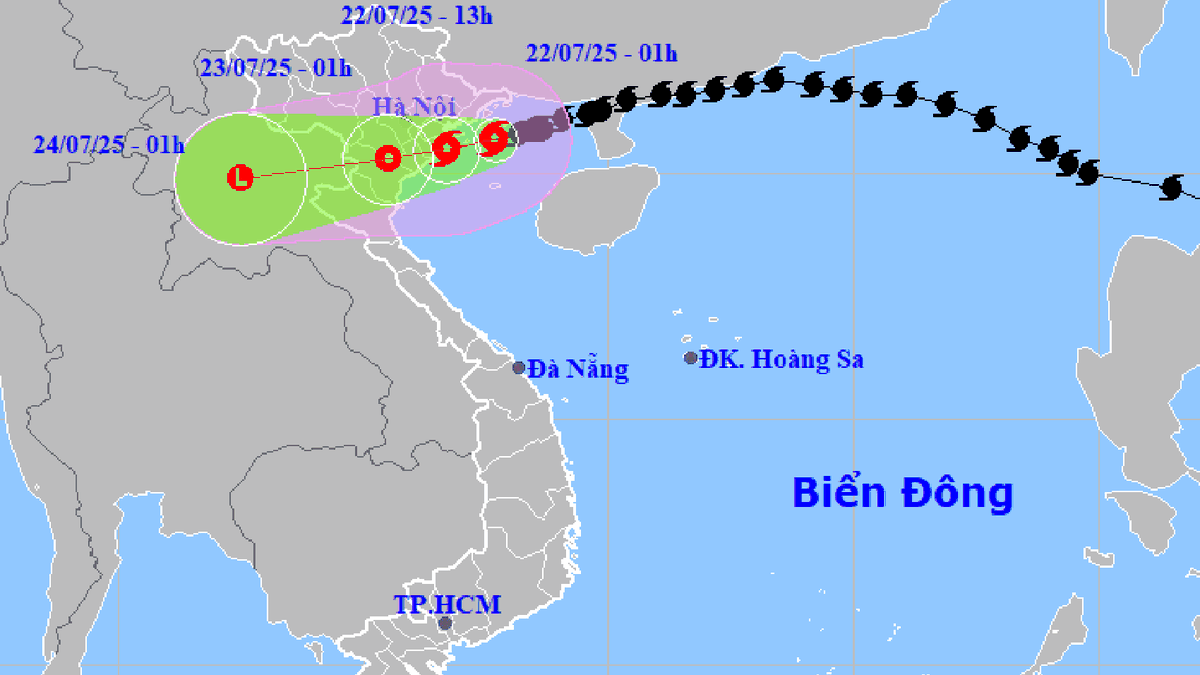

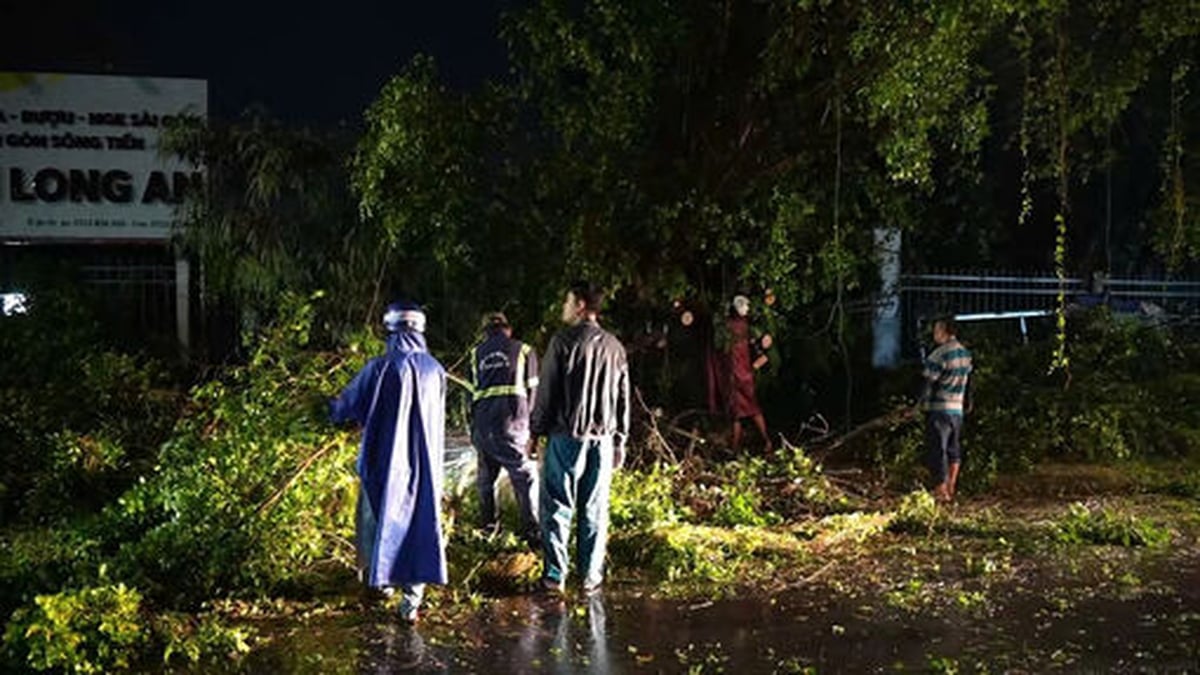
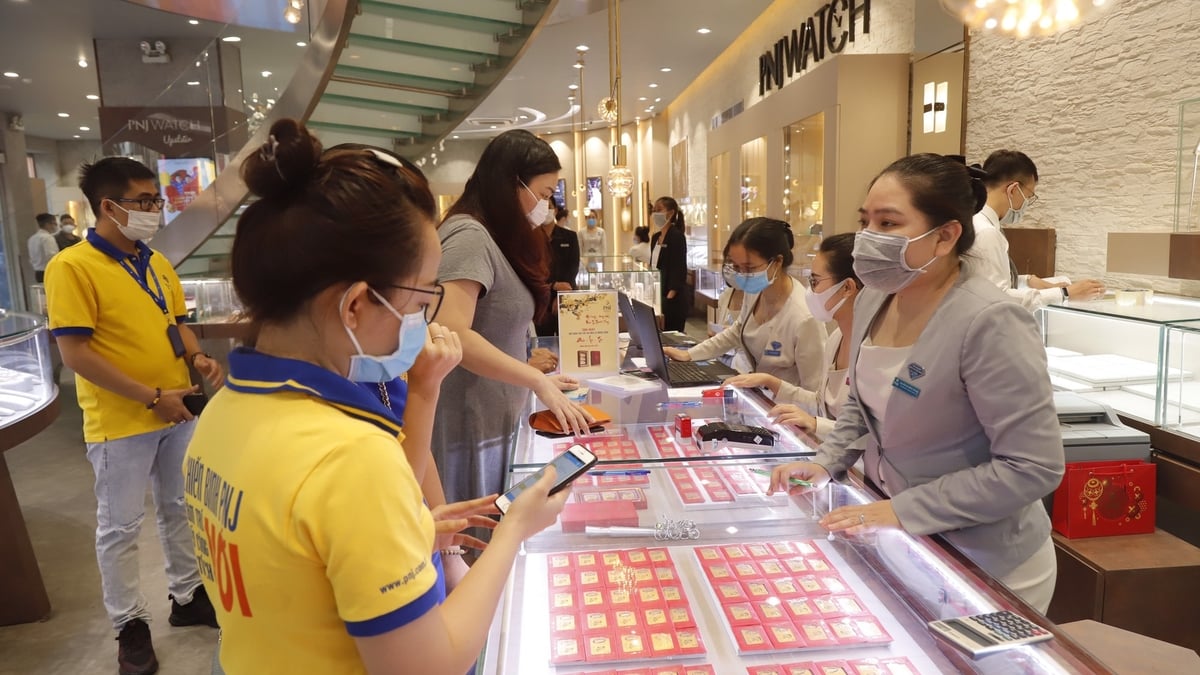
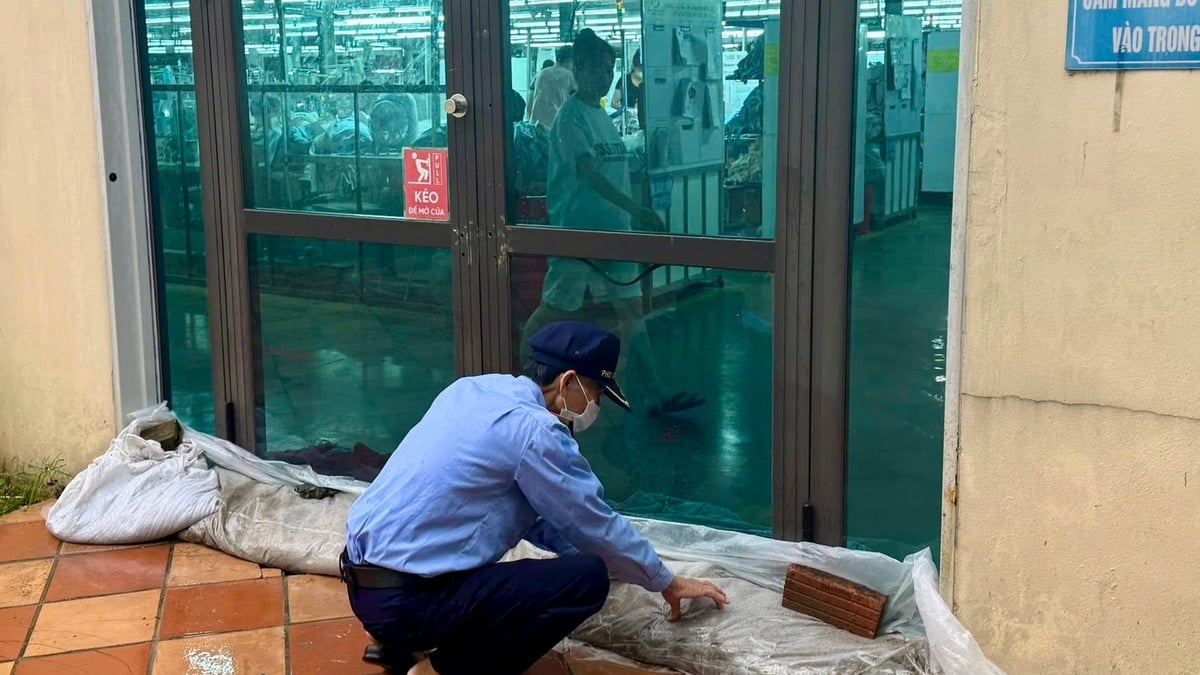
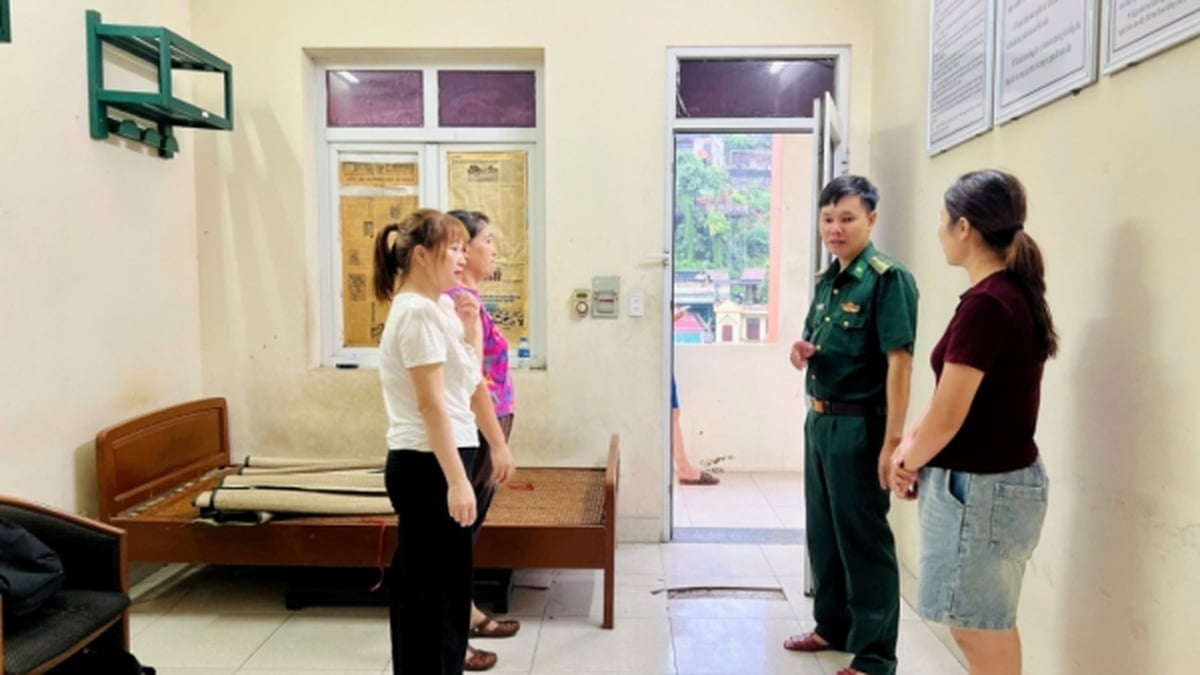

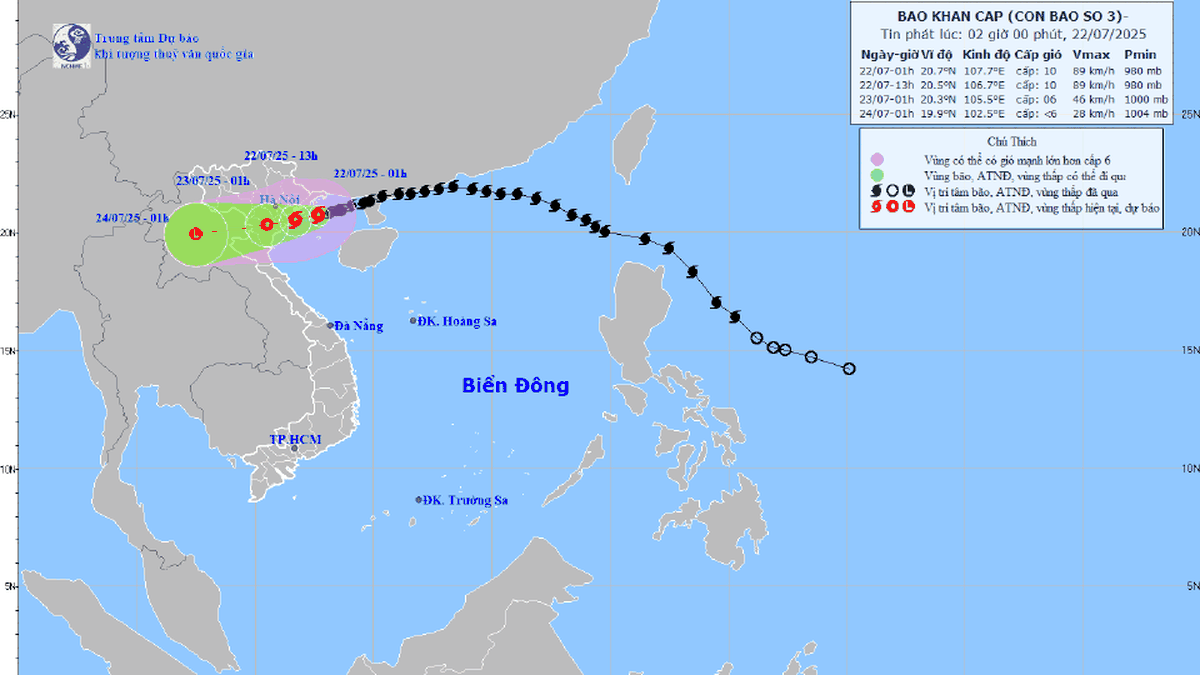
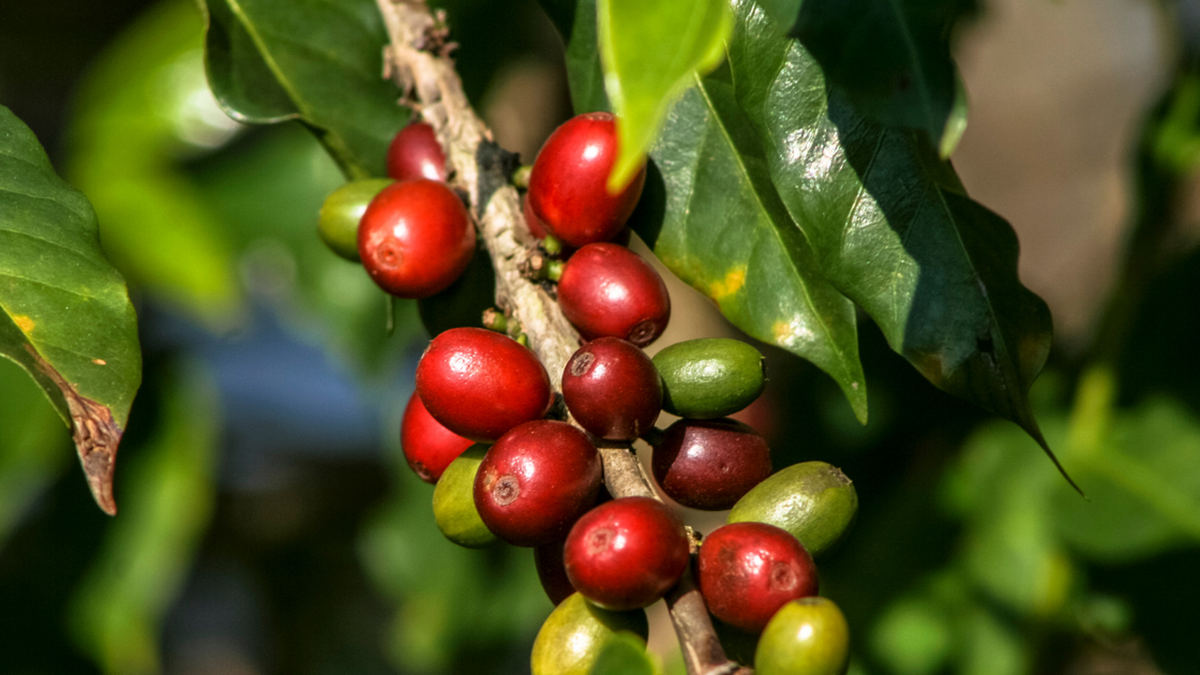












![[Photo] National Assembly Chairman Tran Thanh Man visits Vietnamese Heroic Mother Ta Thi Tran](https://vphoto.vietnam.vn/thumb/1200x675/vietnam/resource/IMAGE/2025/7/20/765c0bd057dd44ad83ab89fe0255b783)










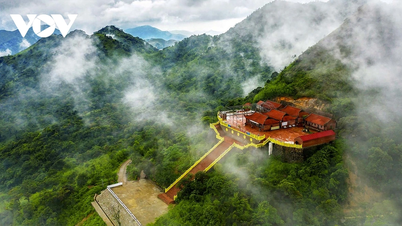



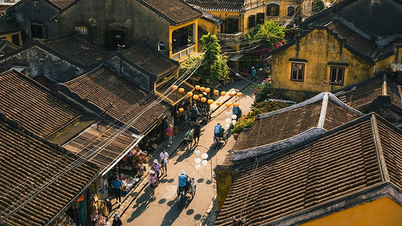



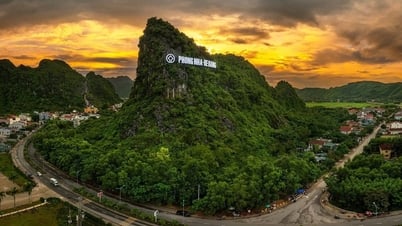





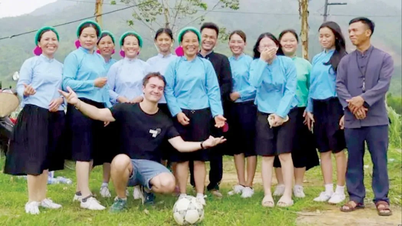

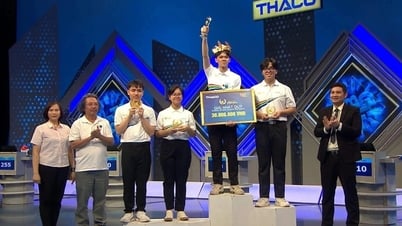

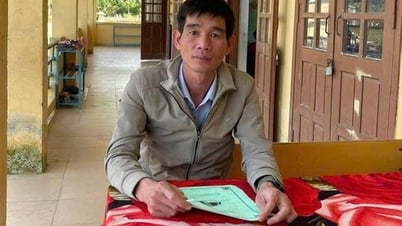
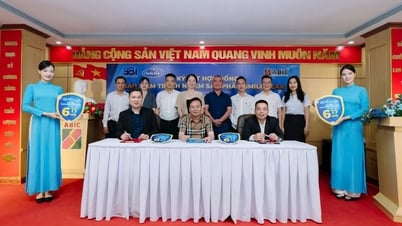


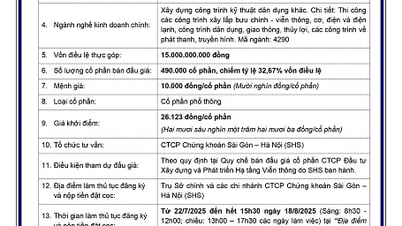
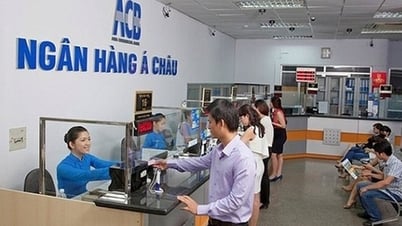



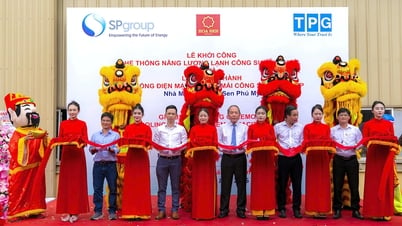
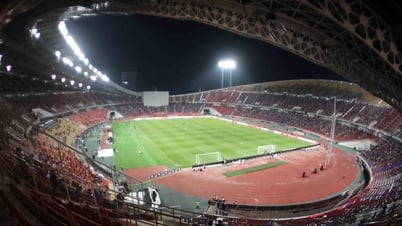

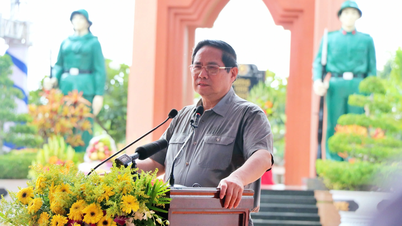
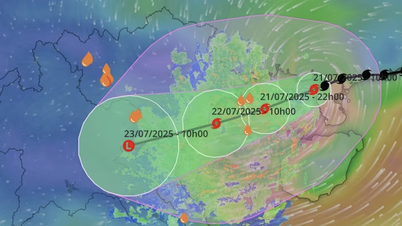

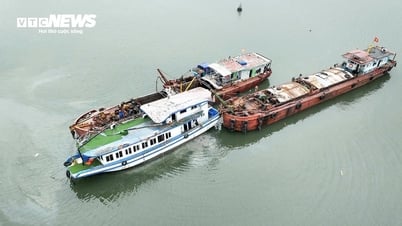


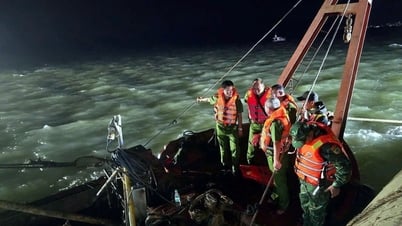
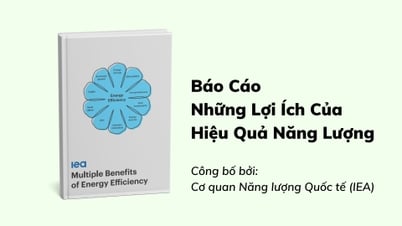



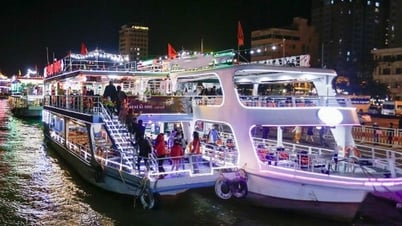

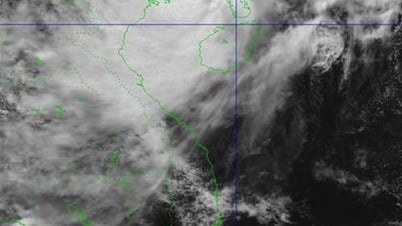
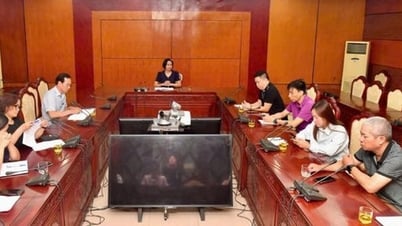
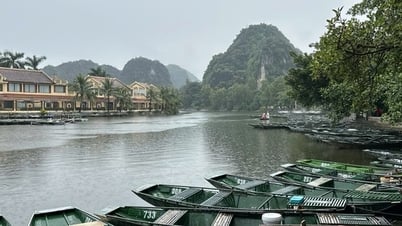

















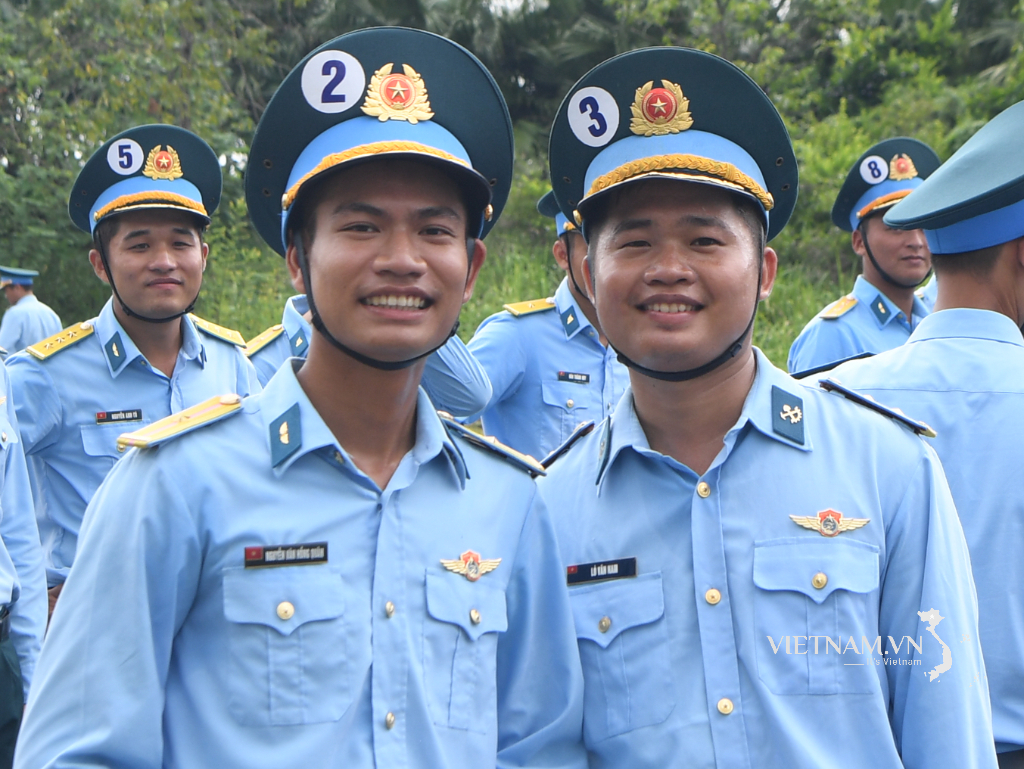
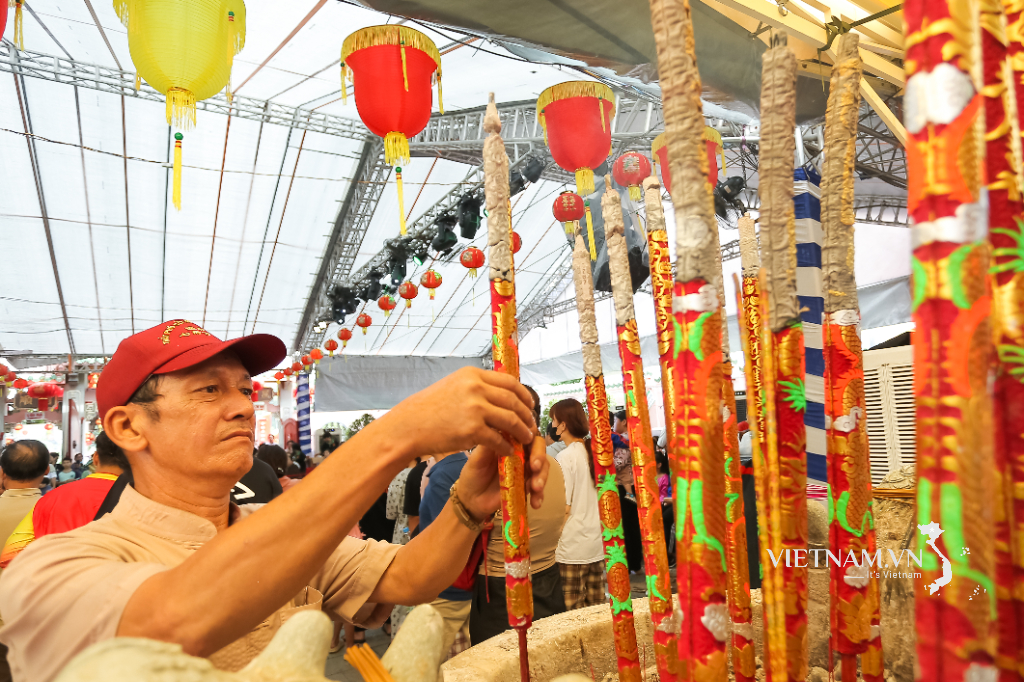
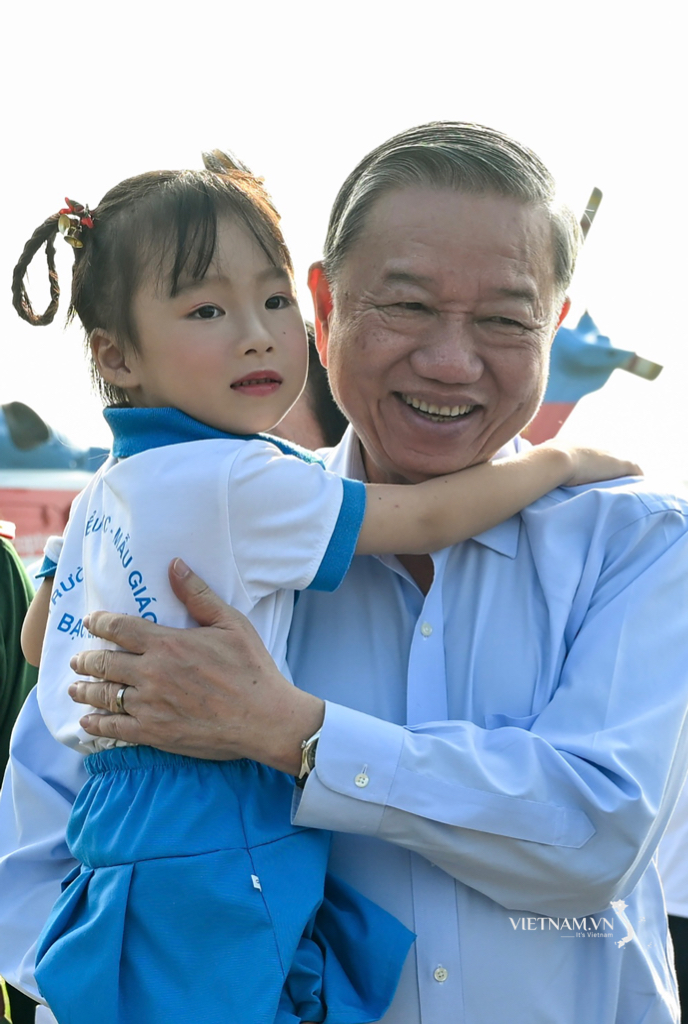
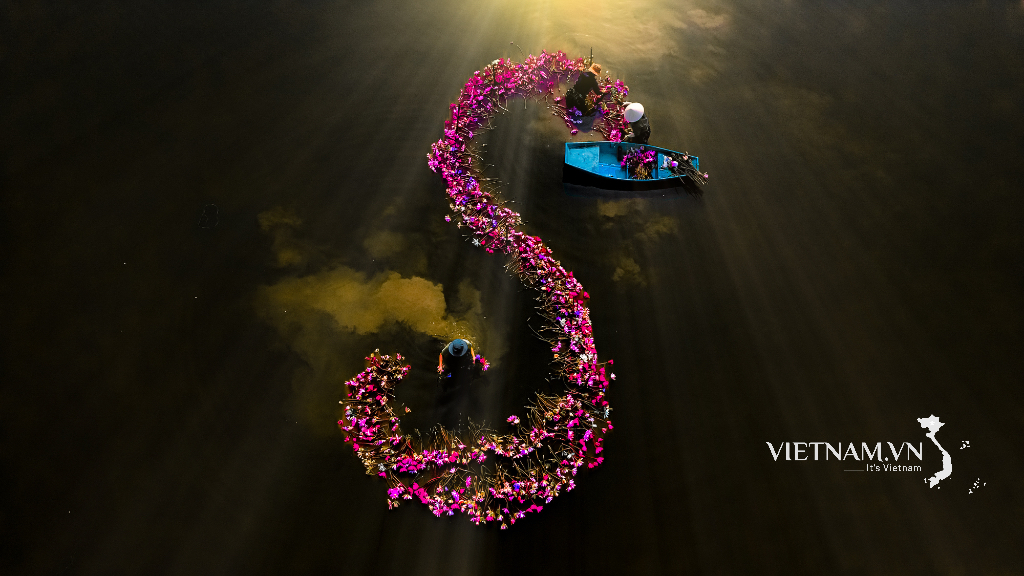
Comment (0)